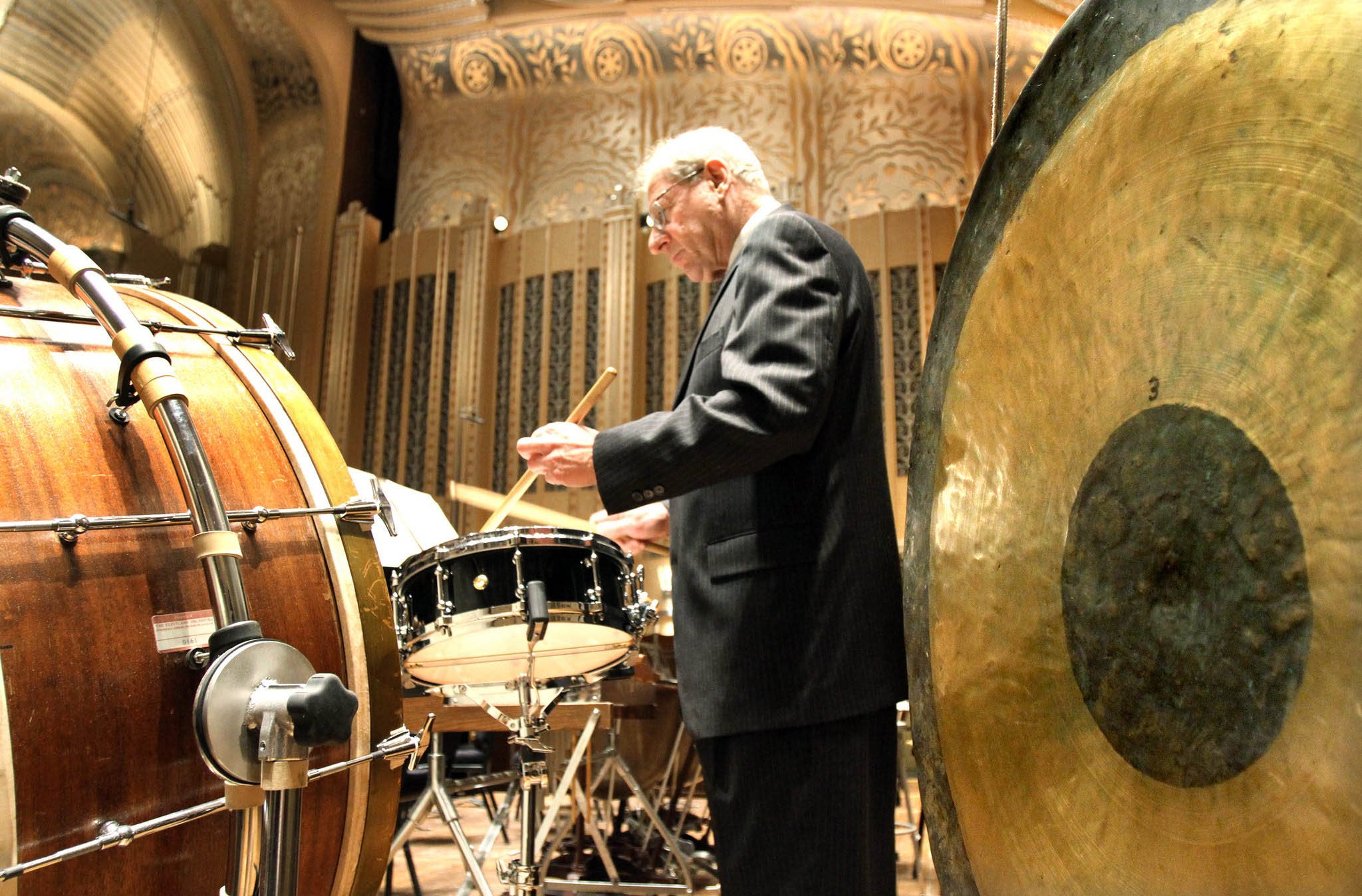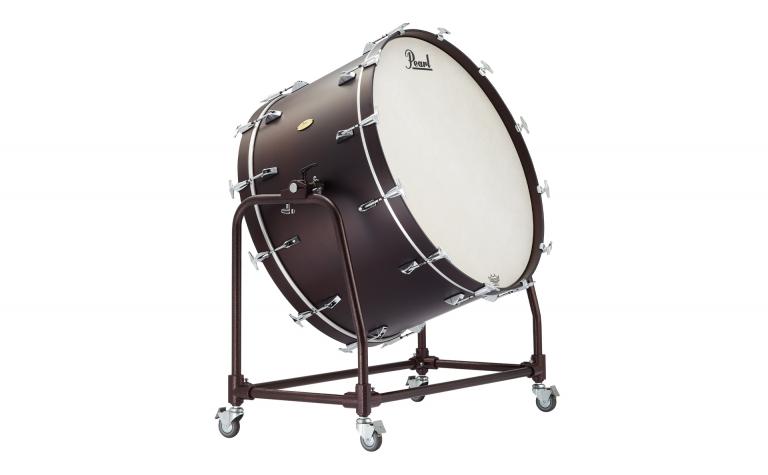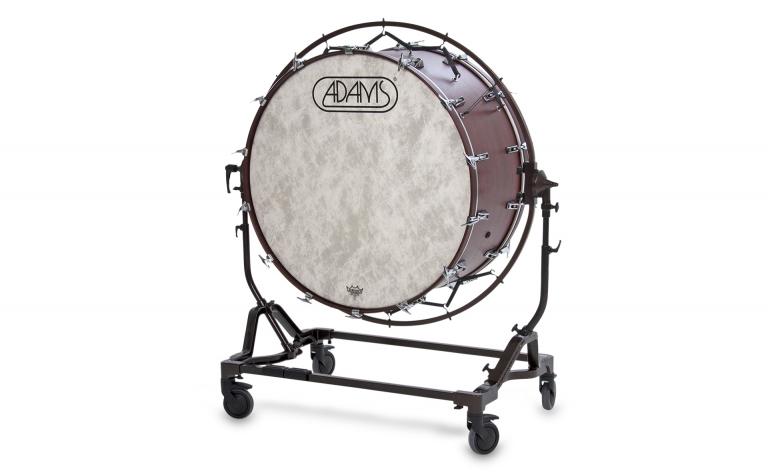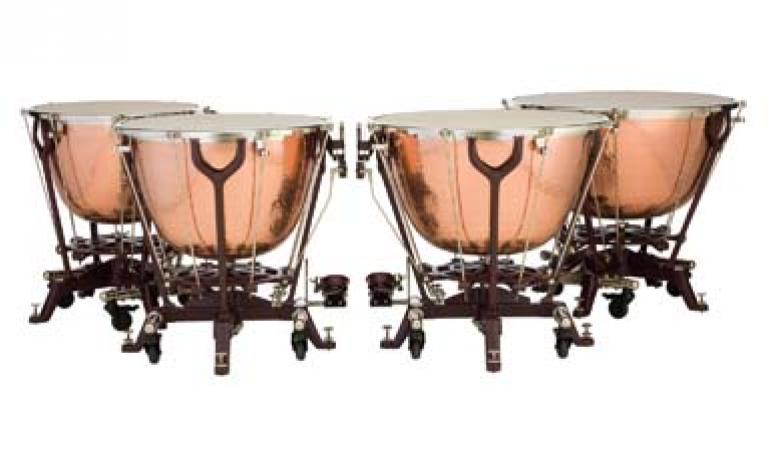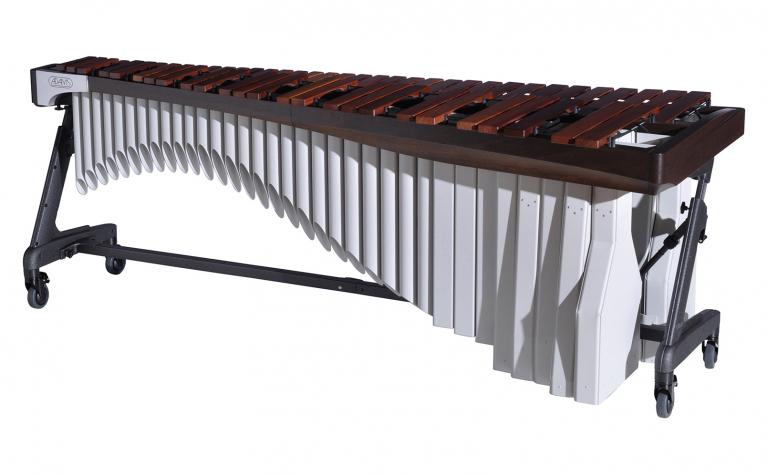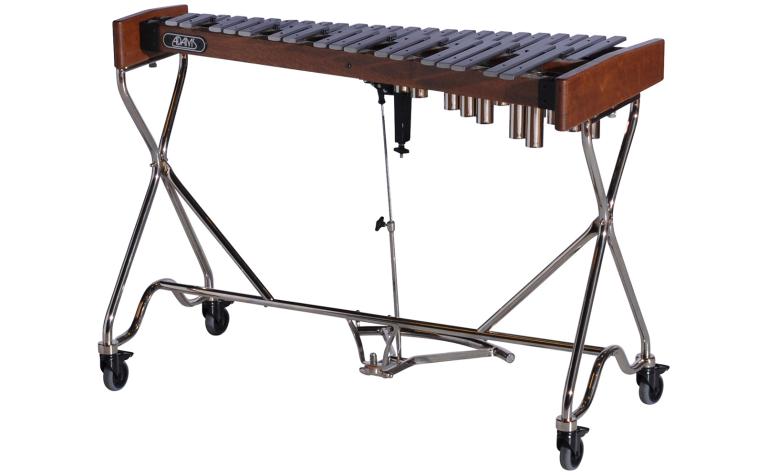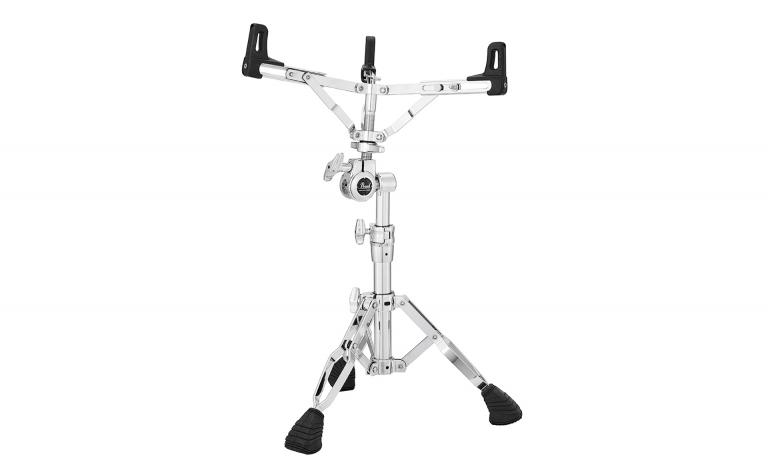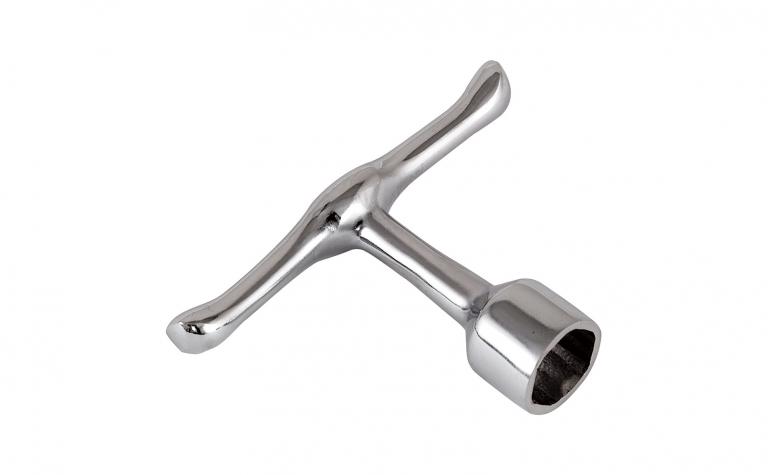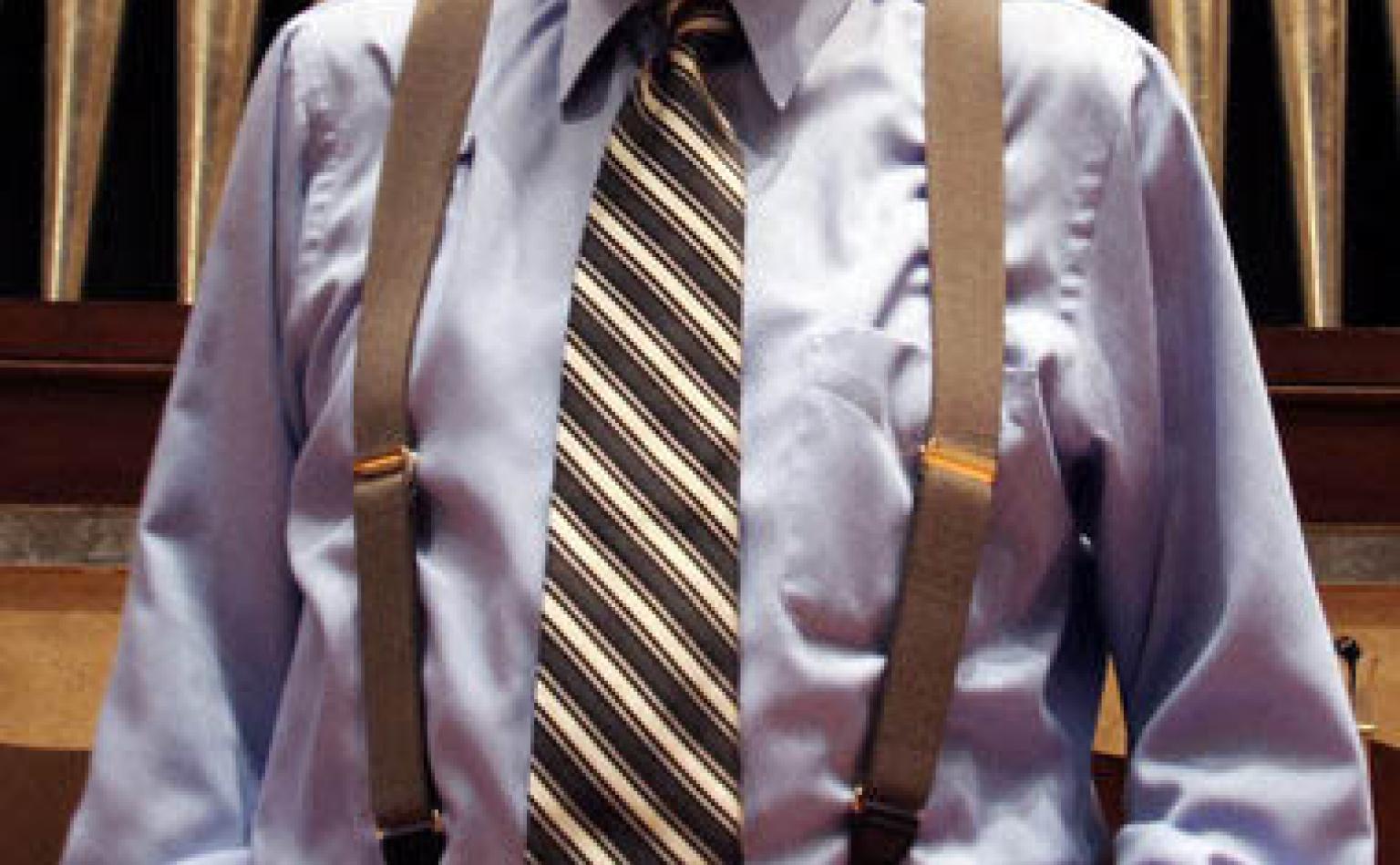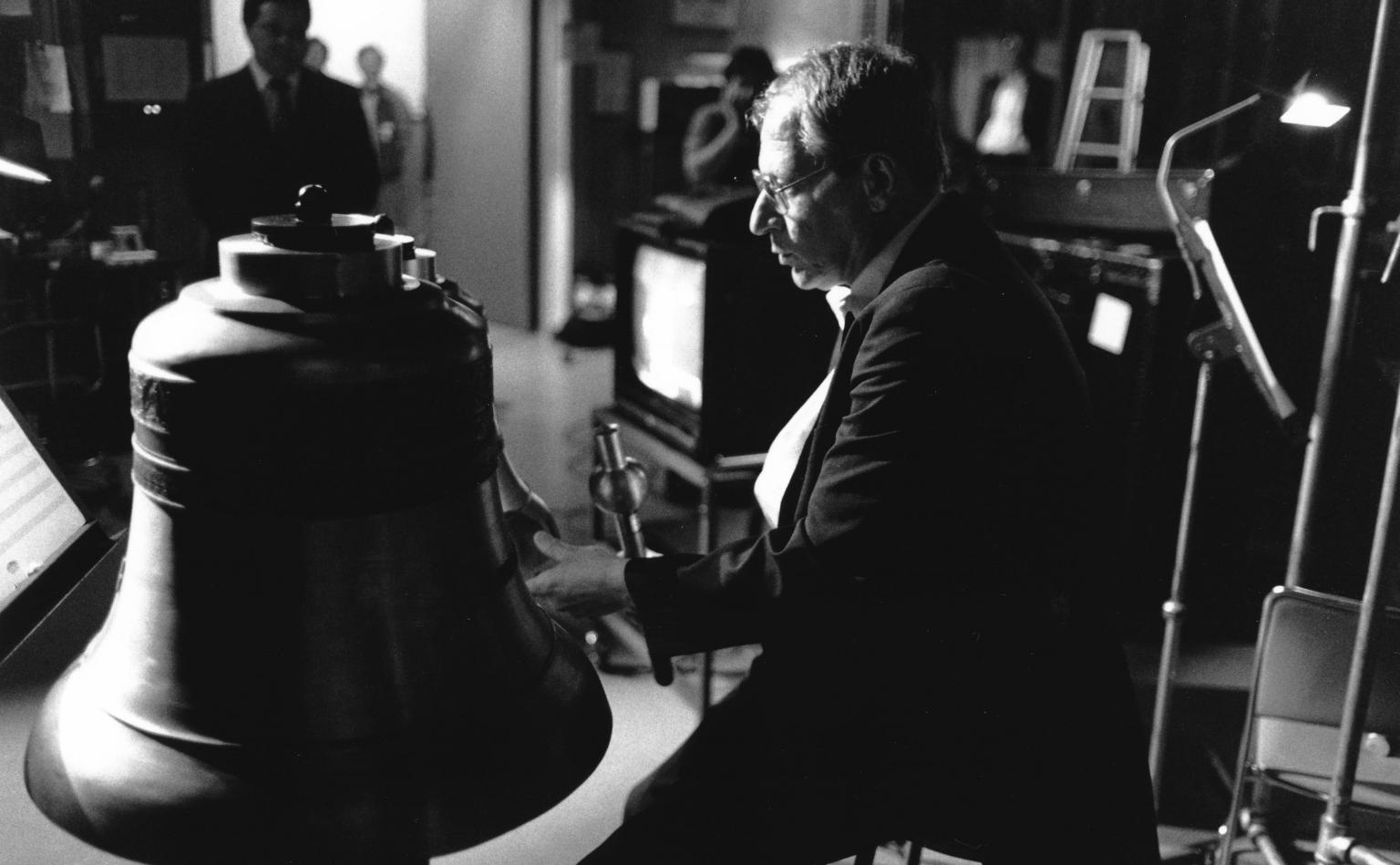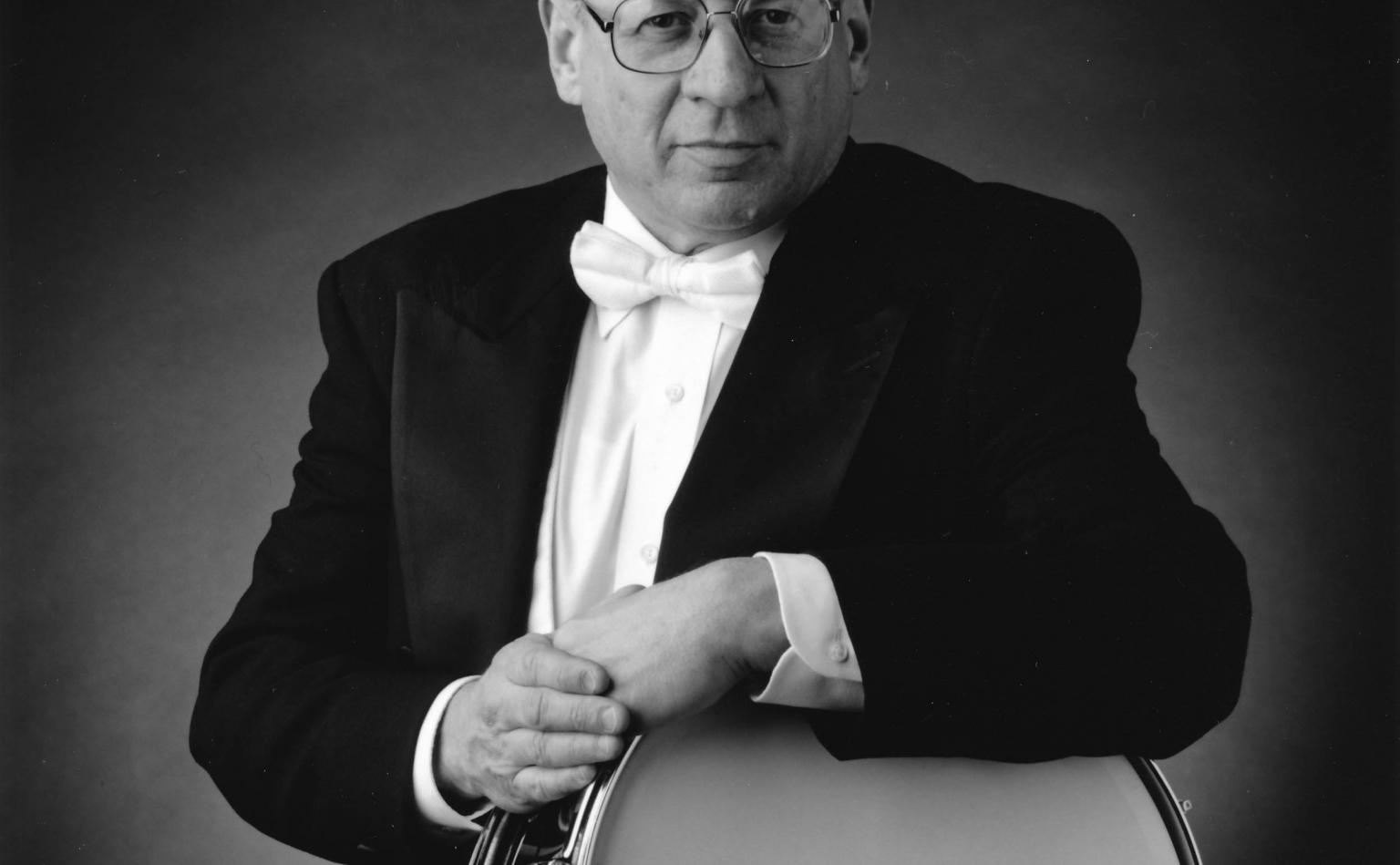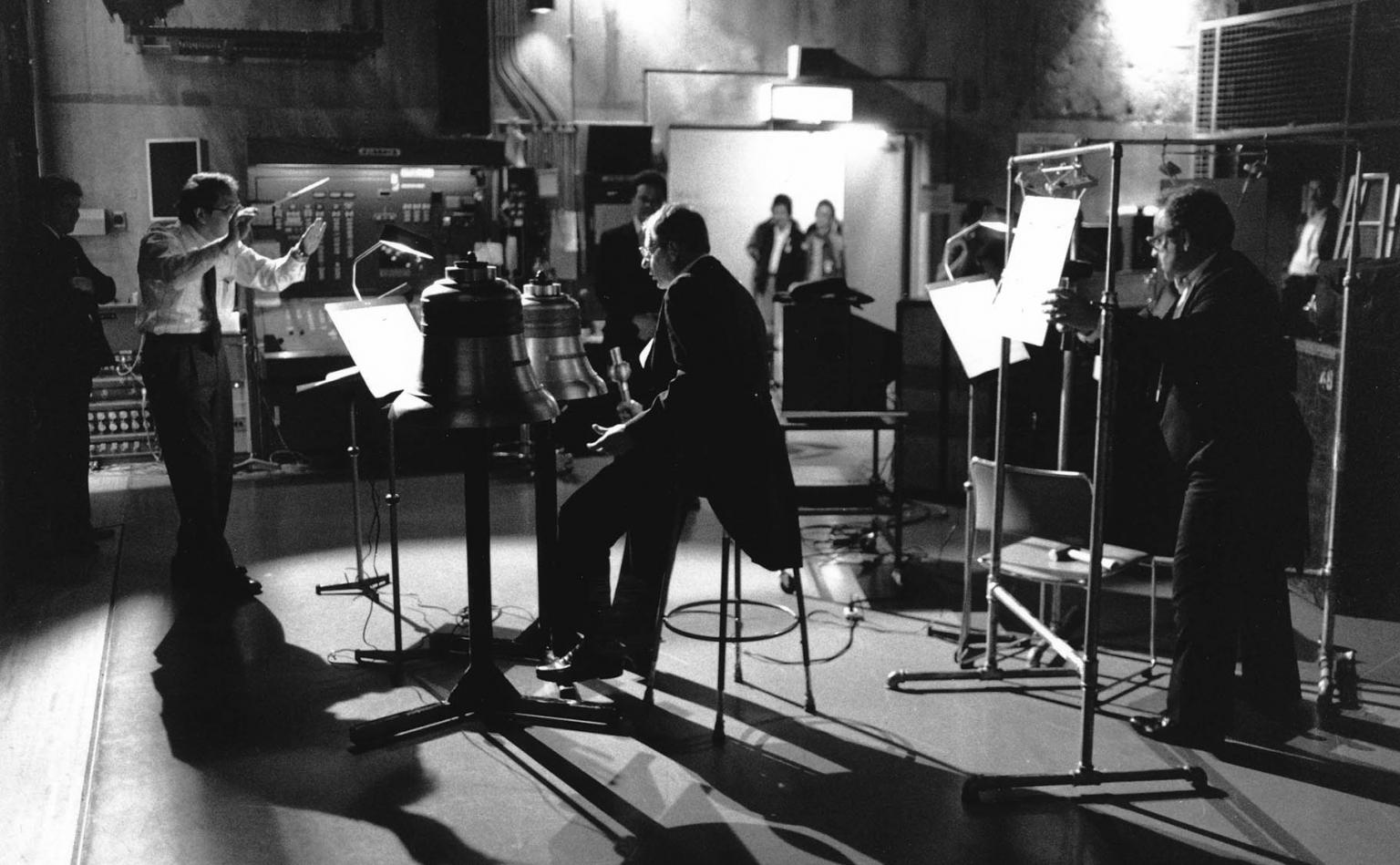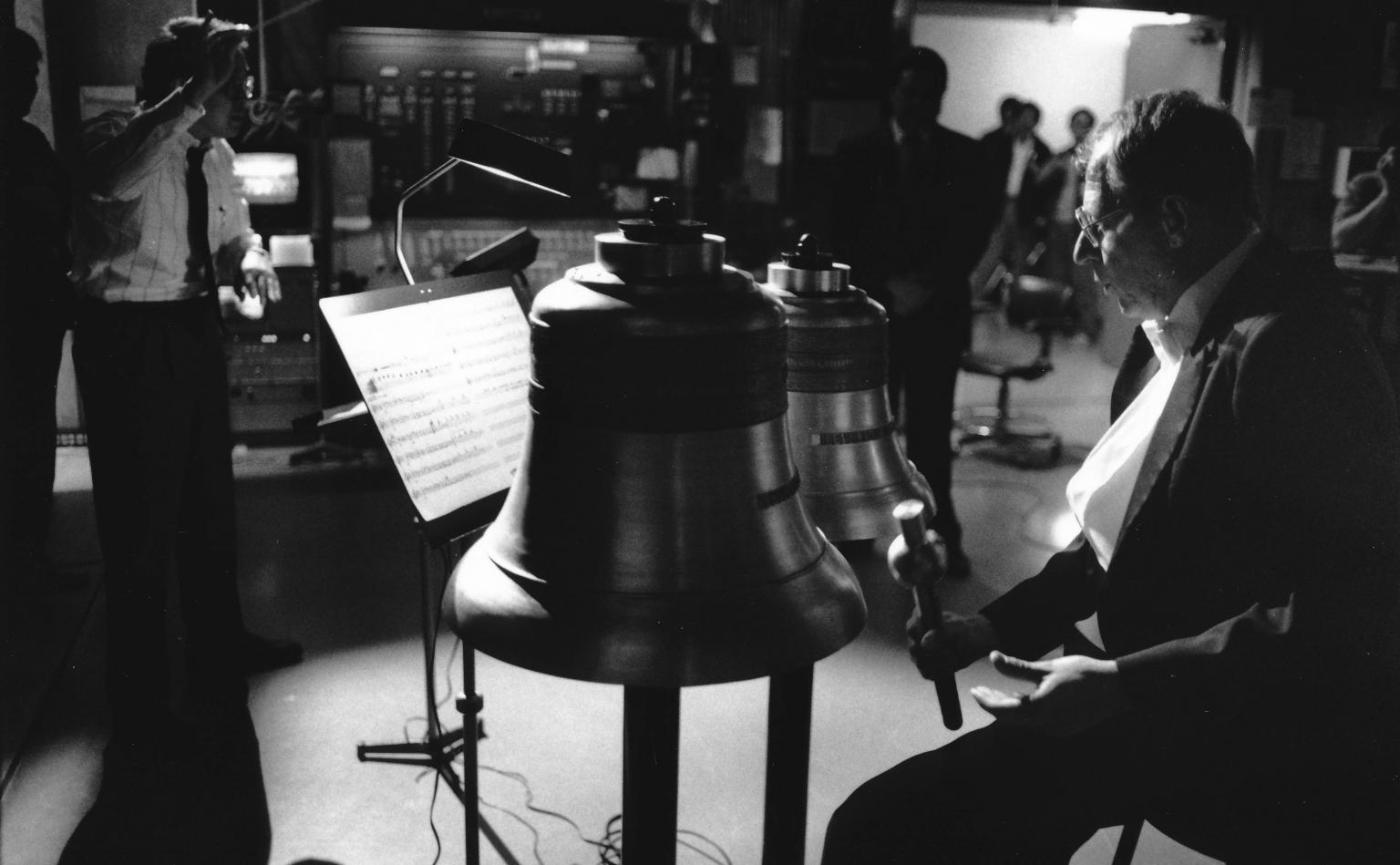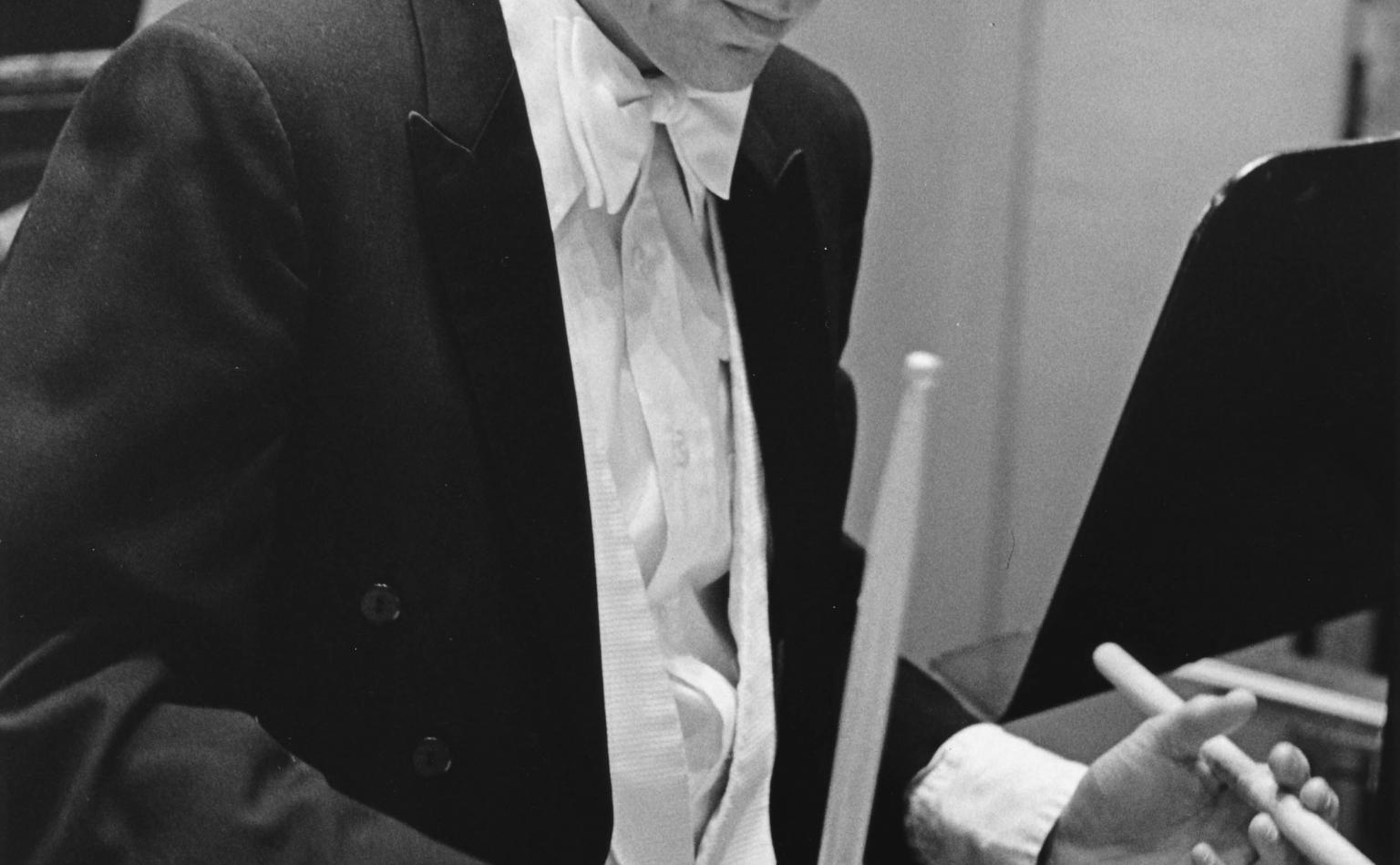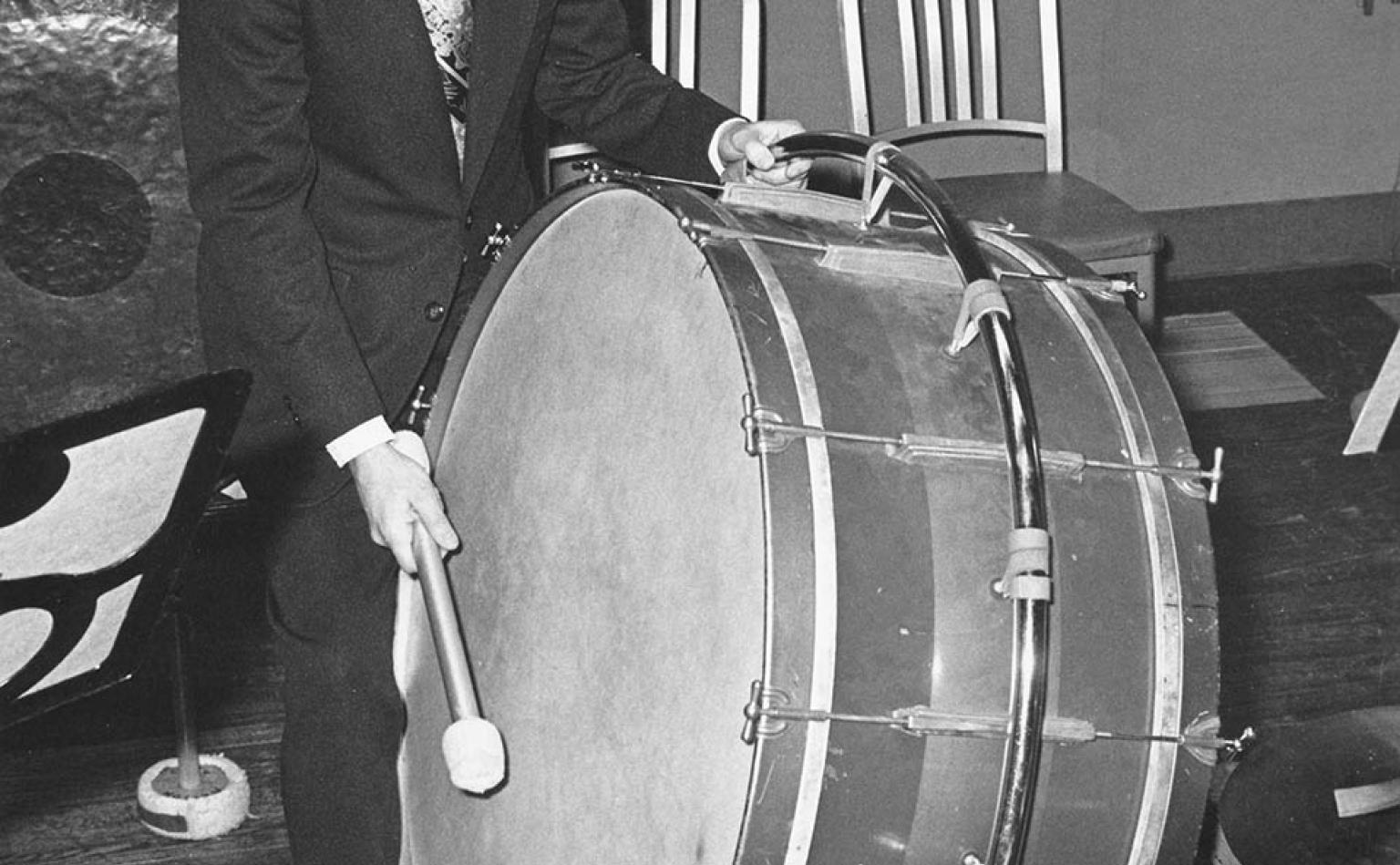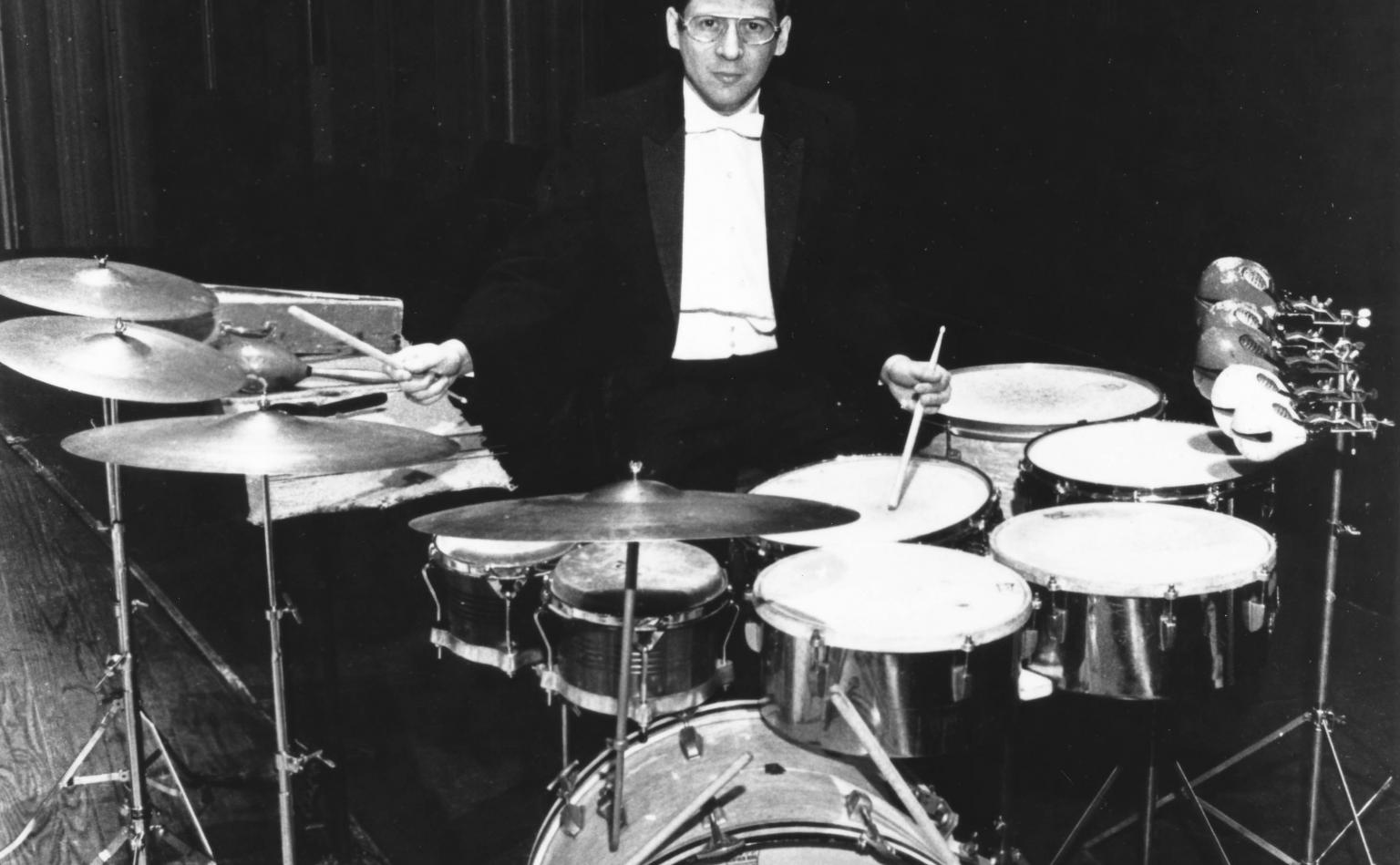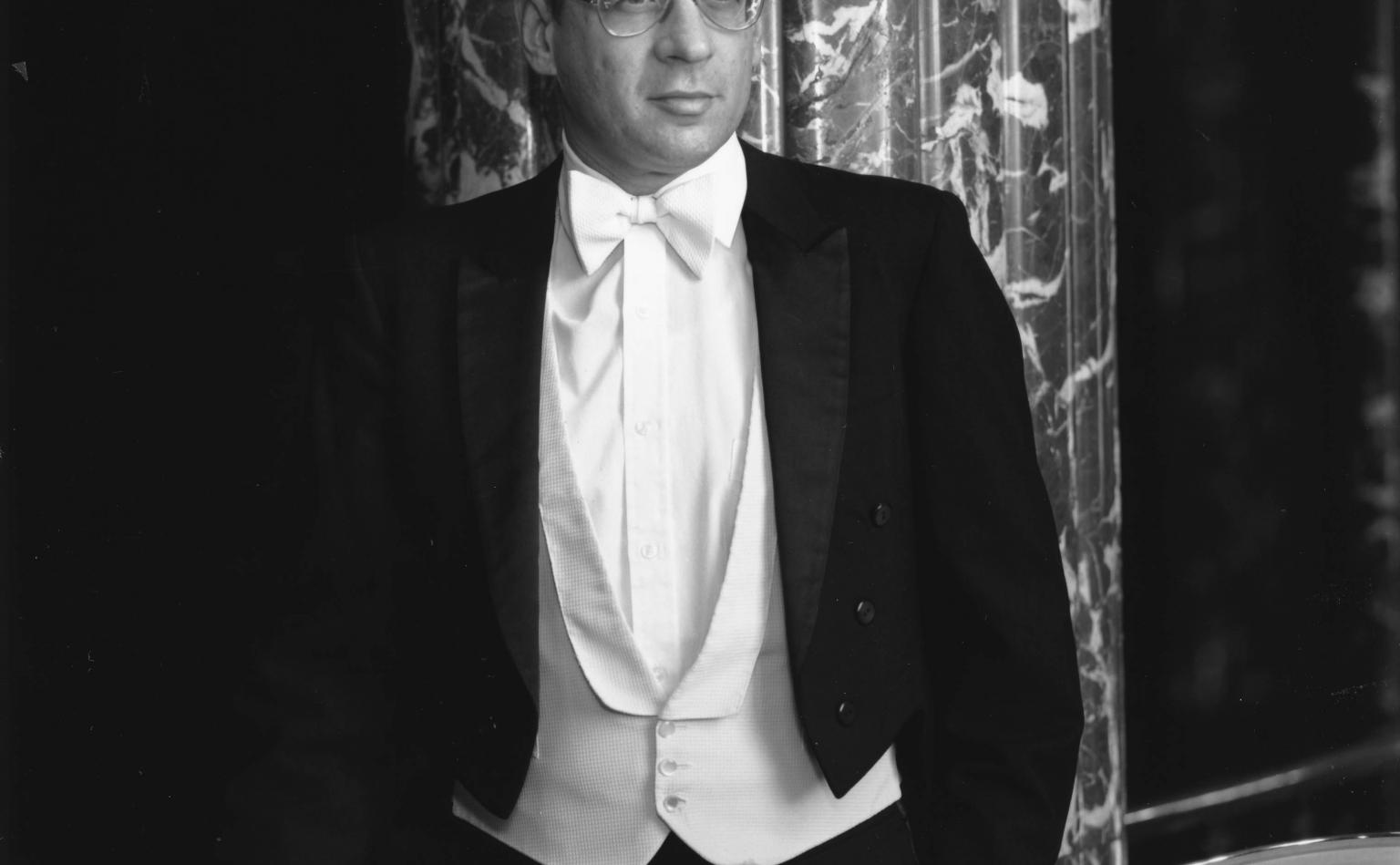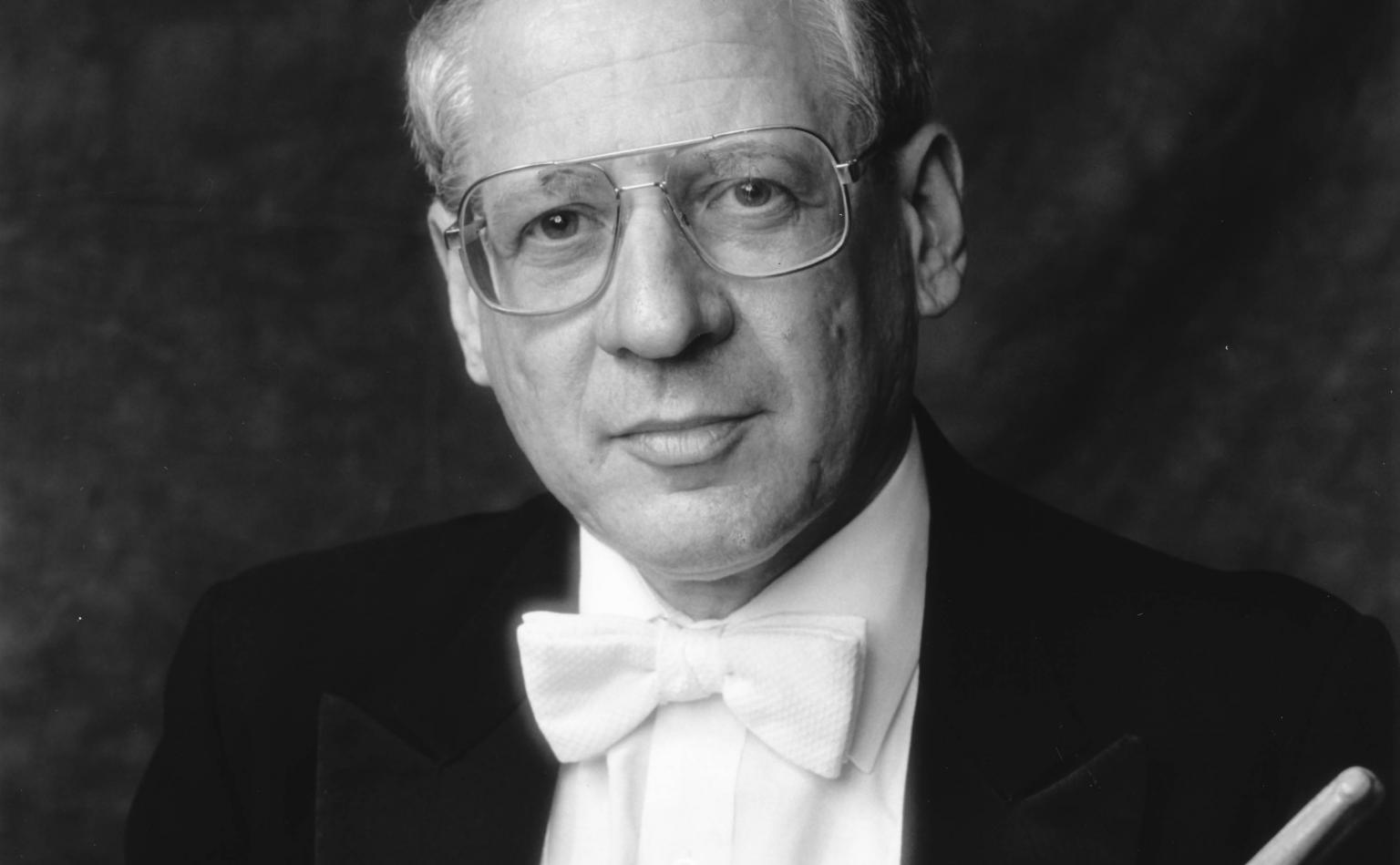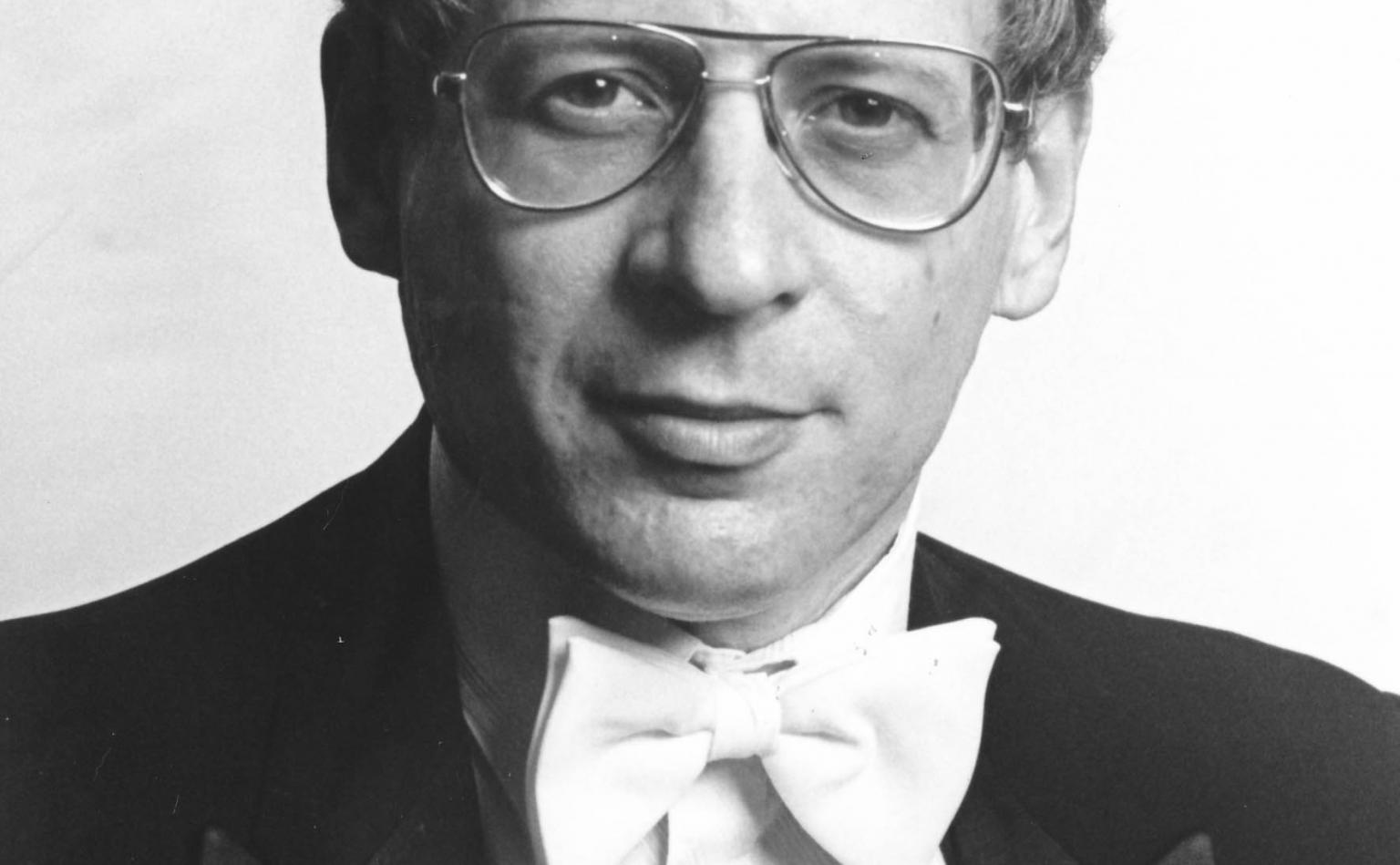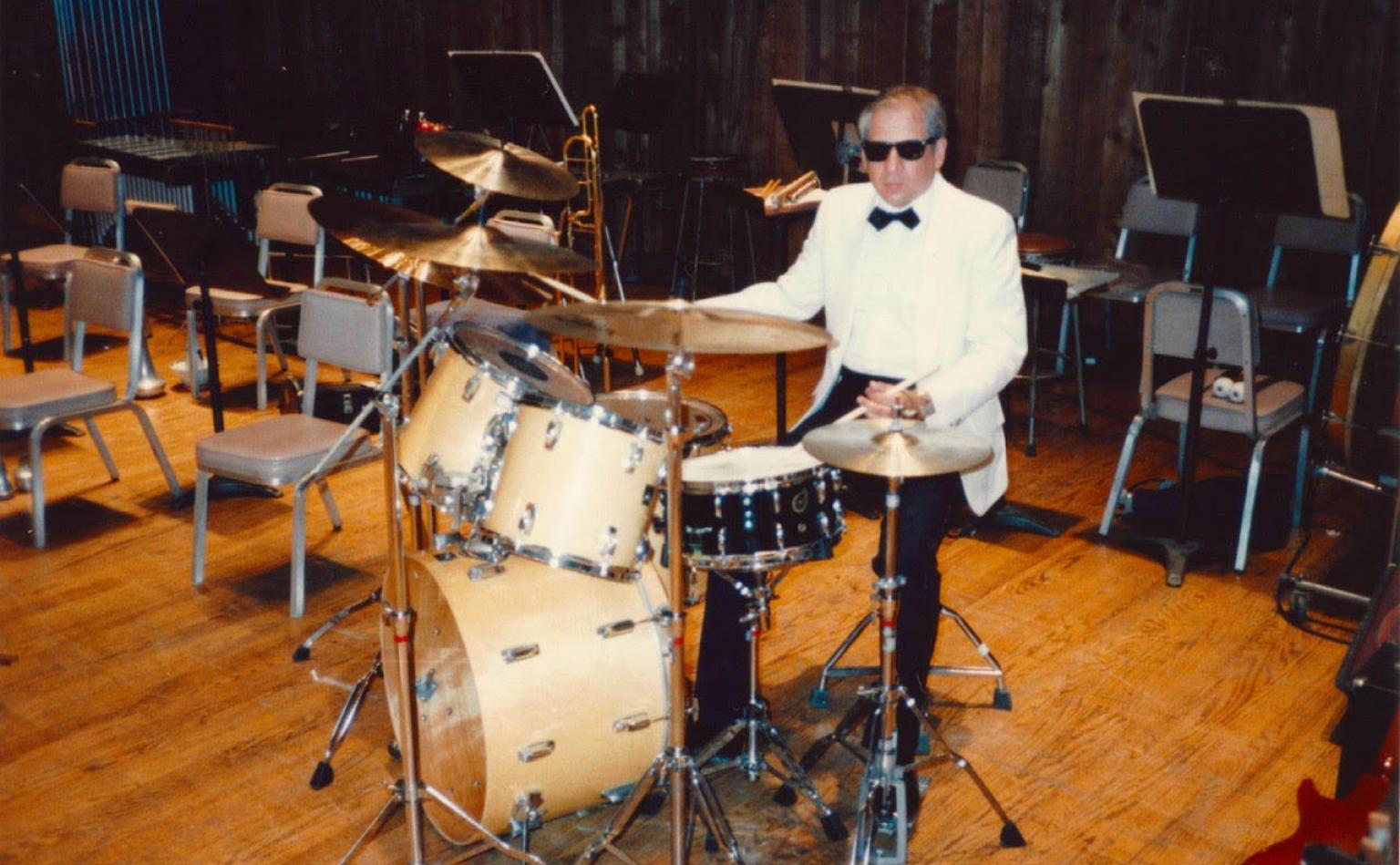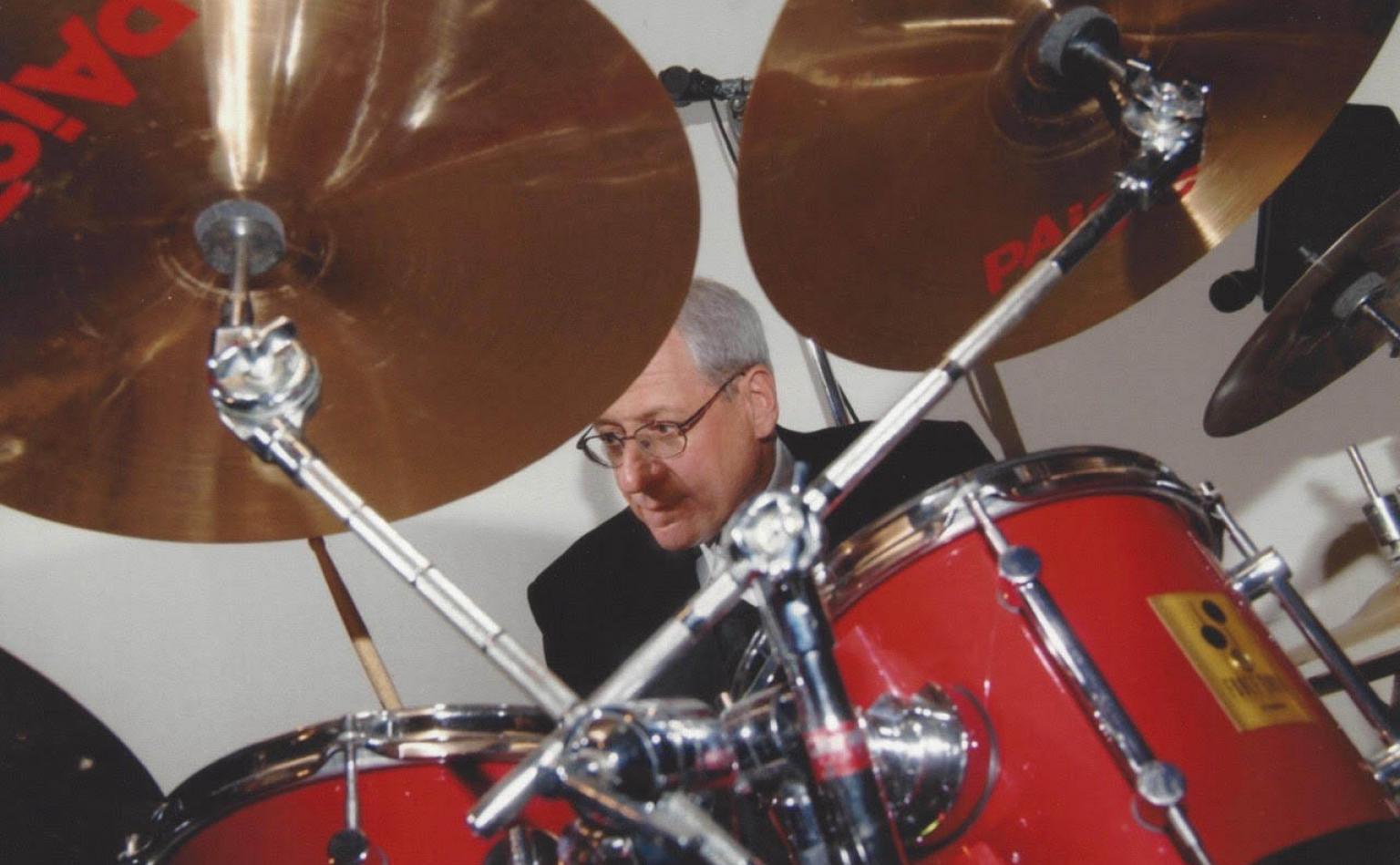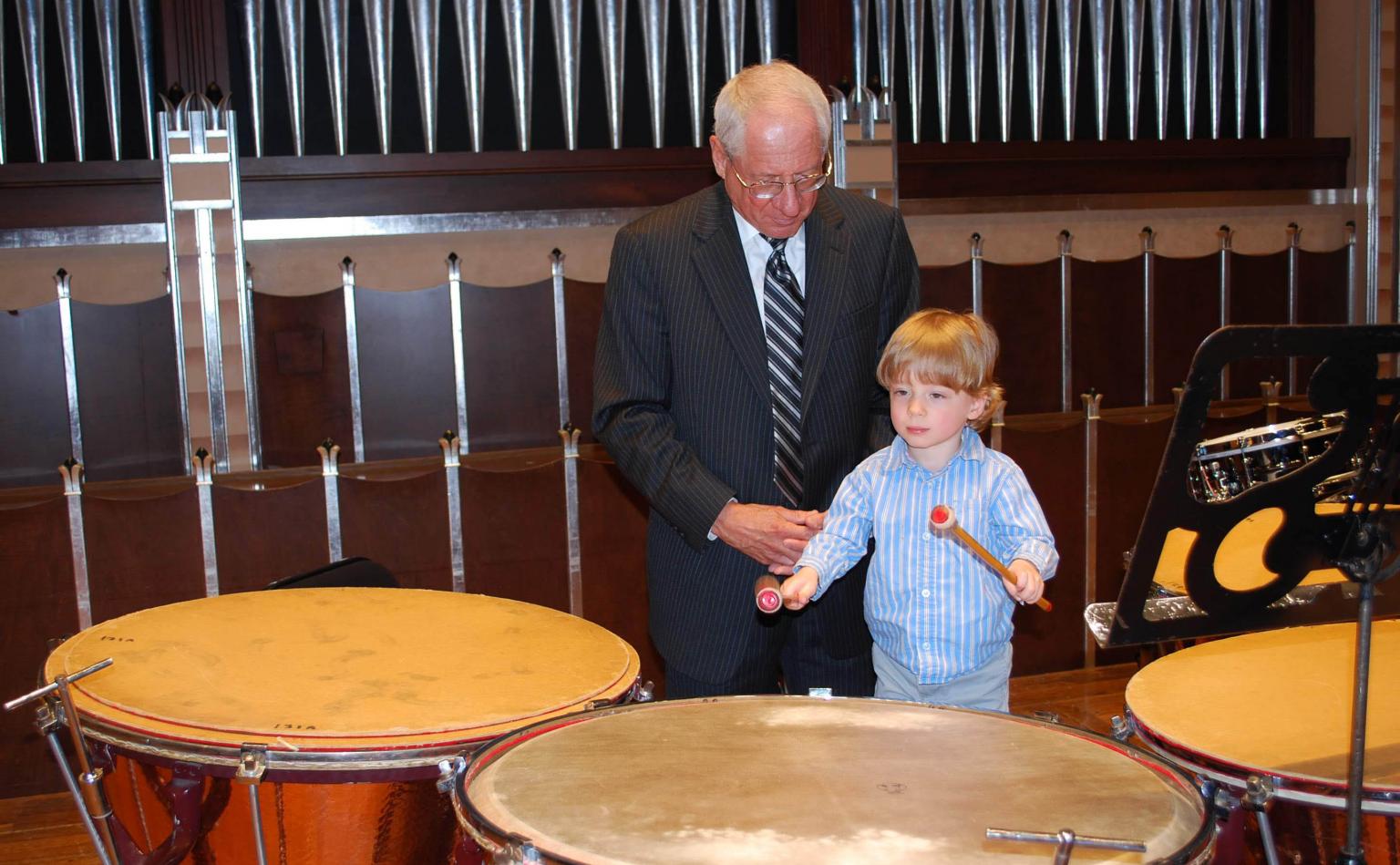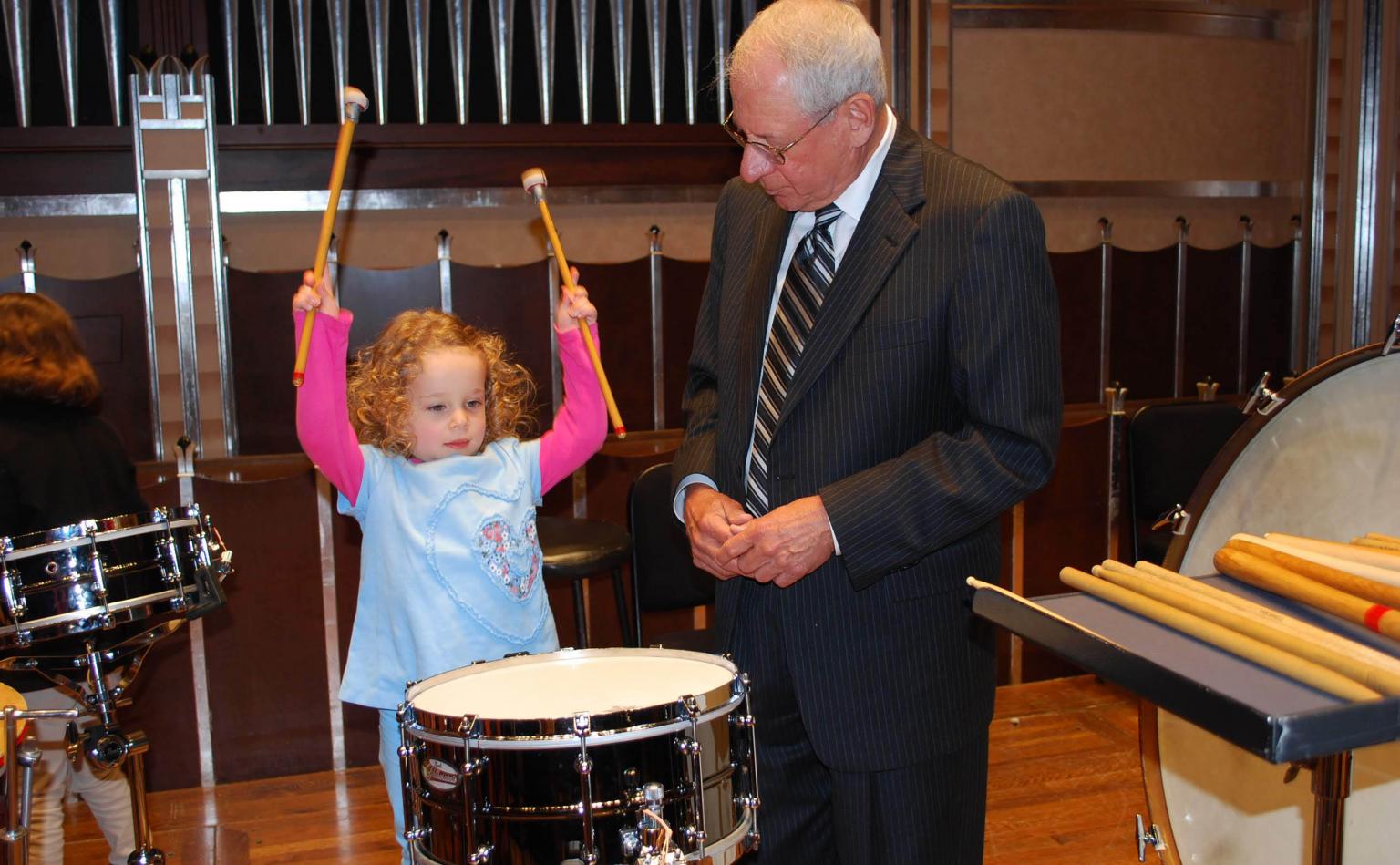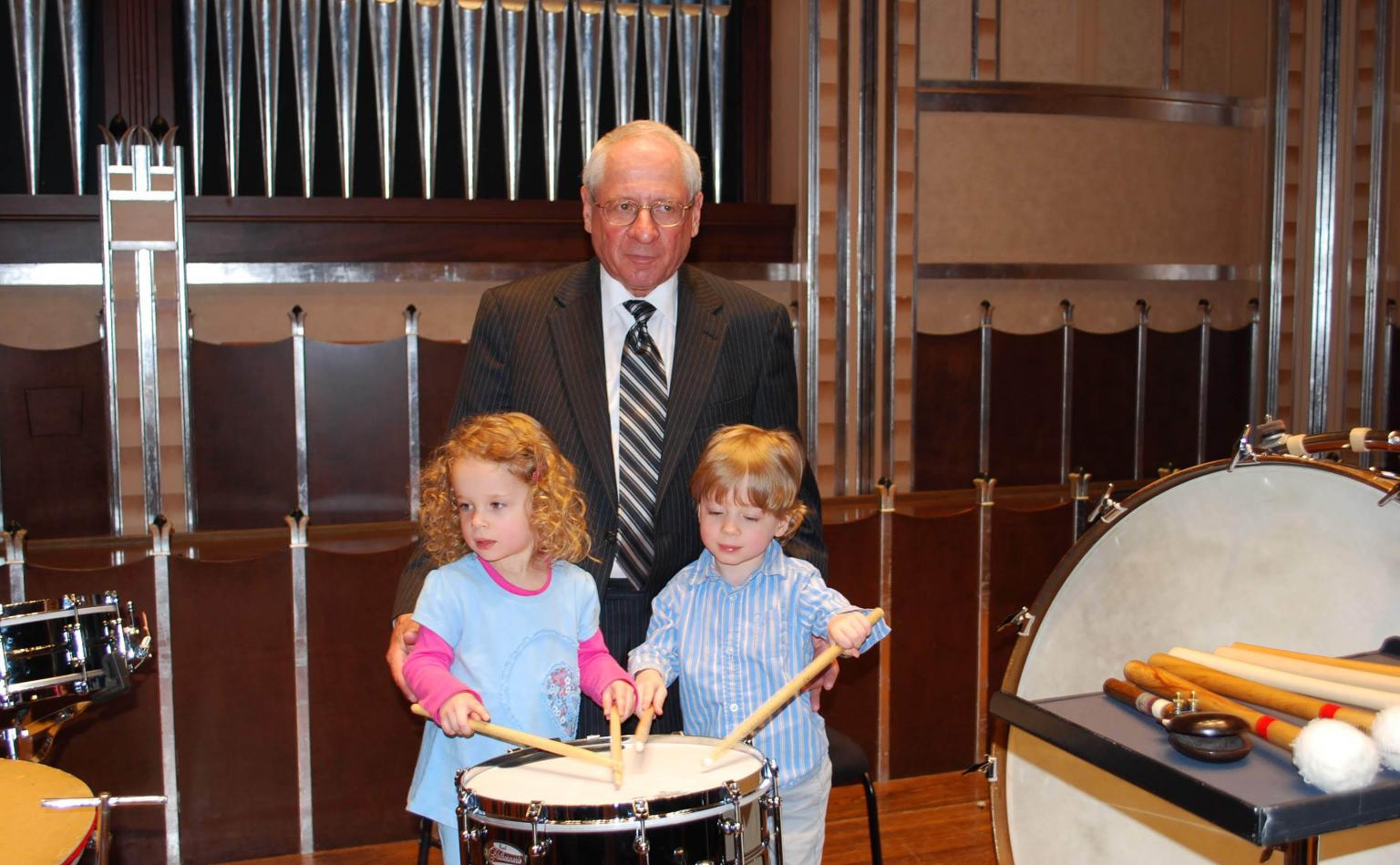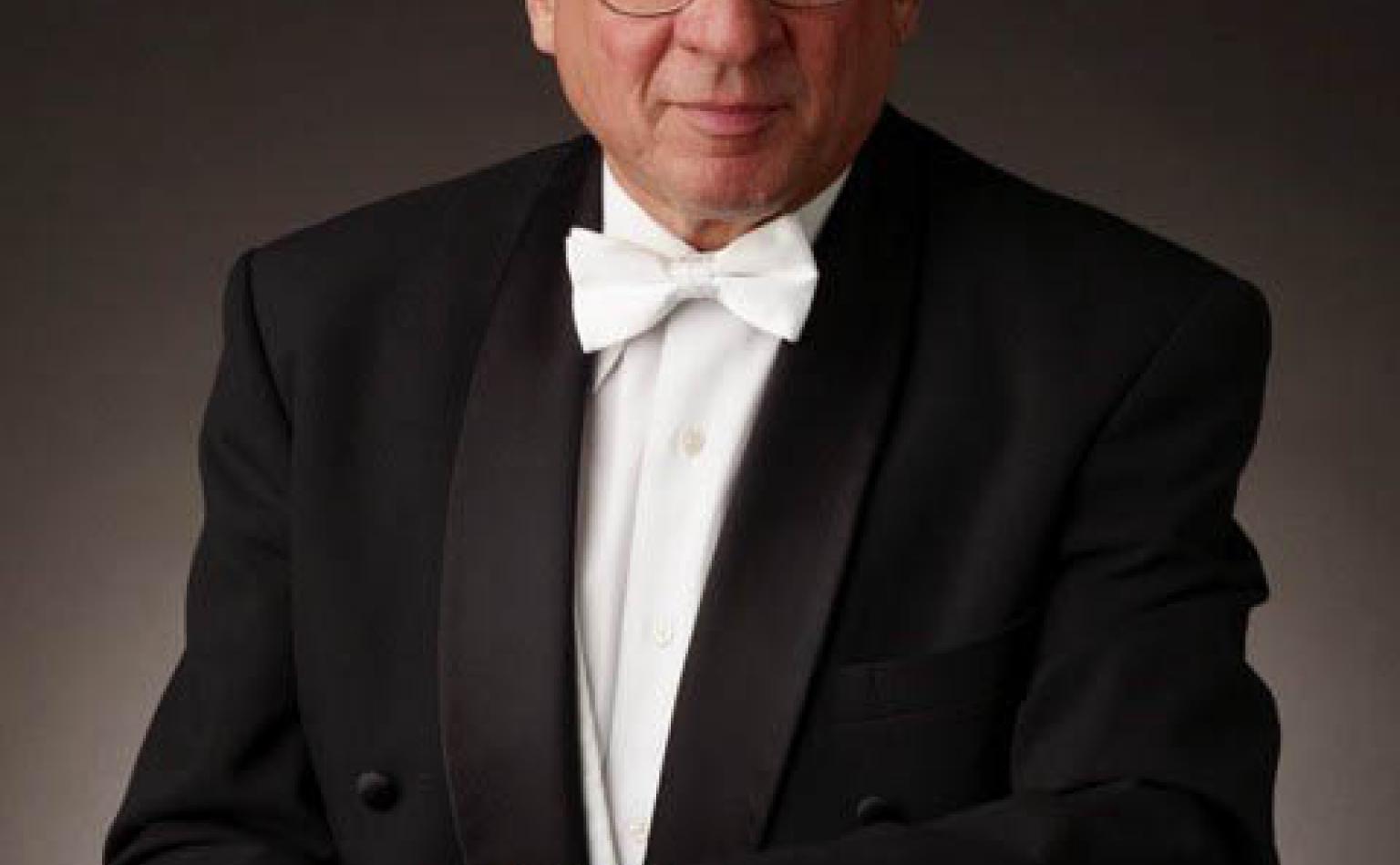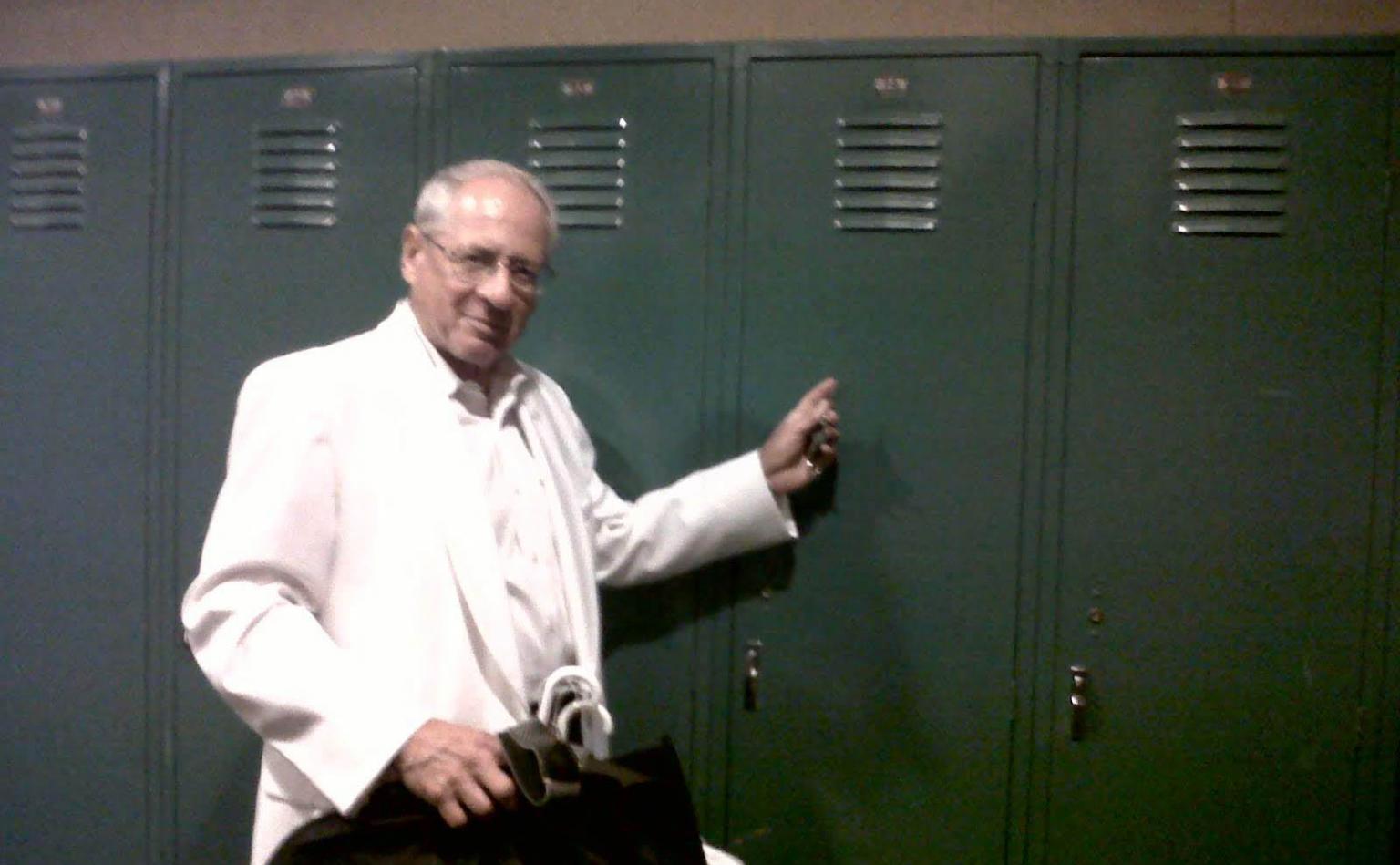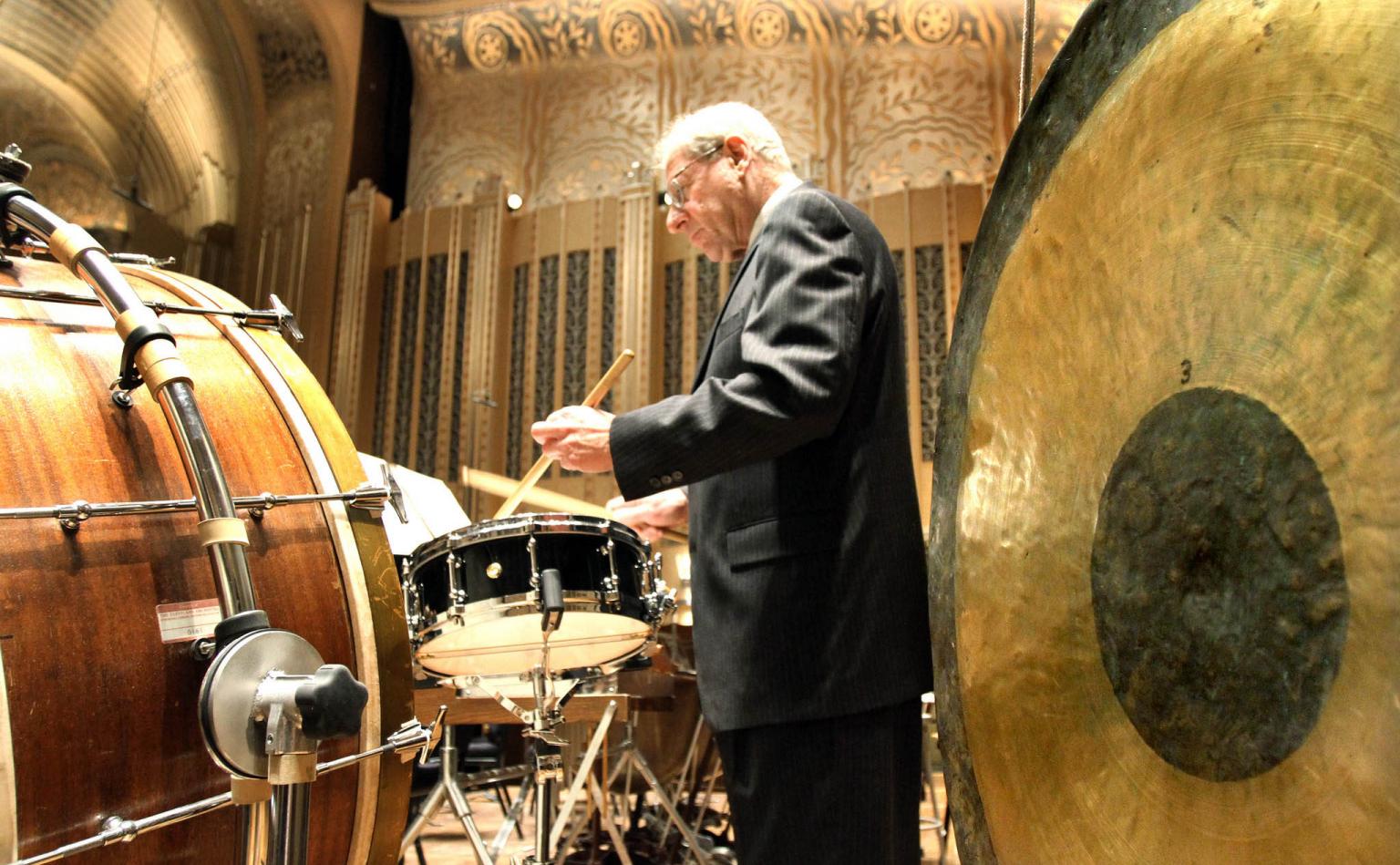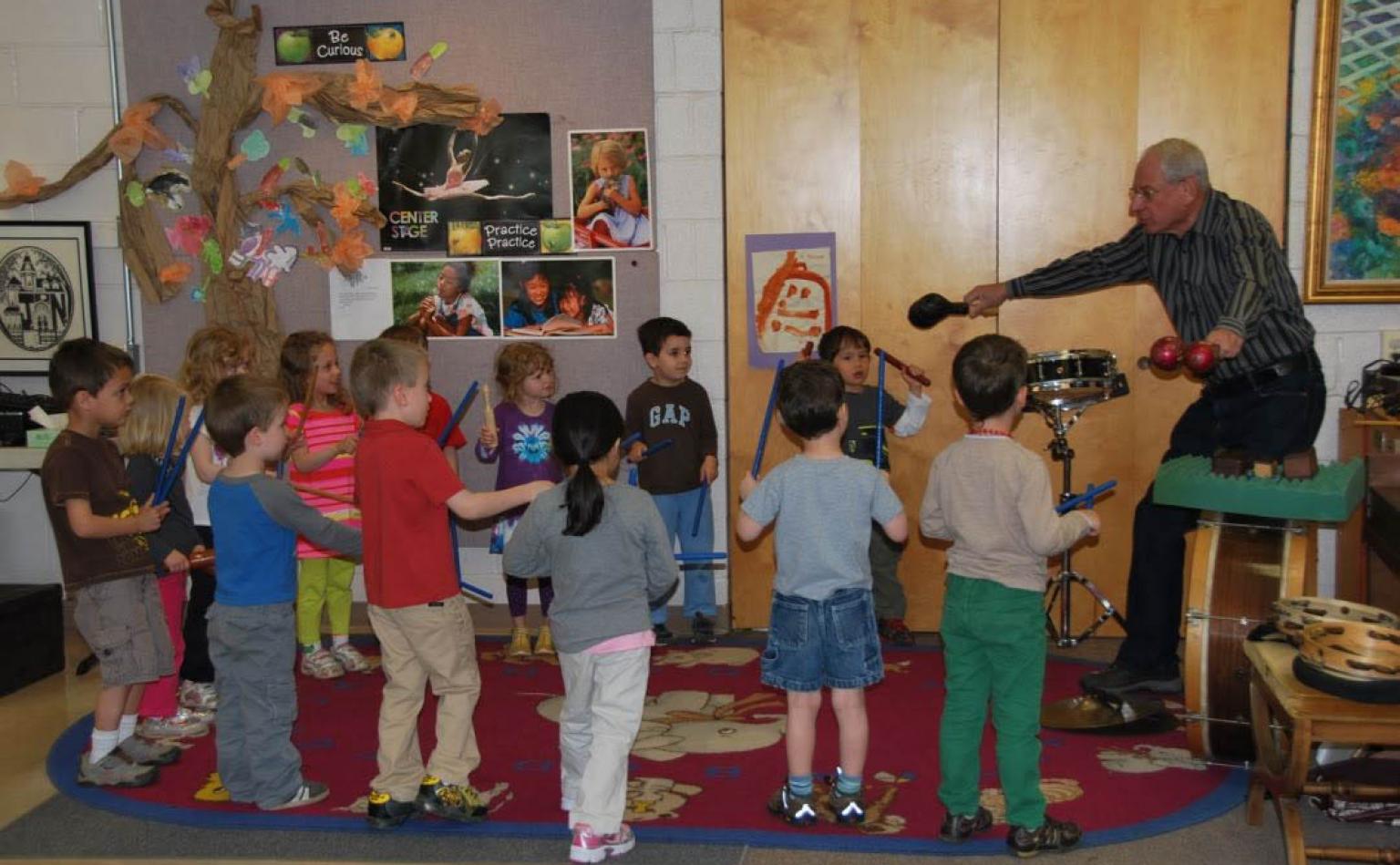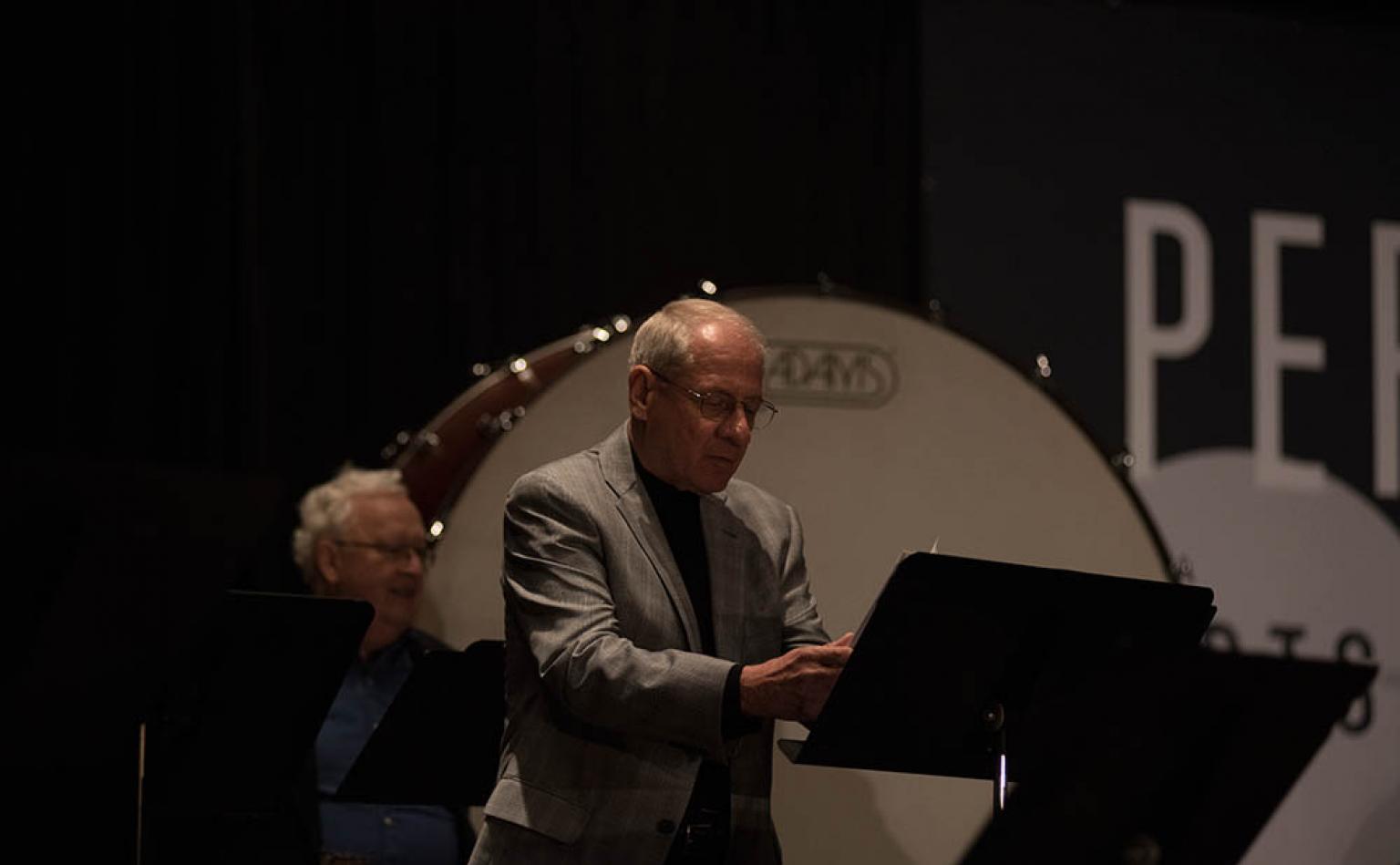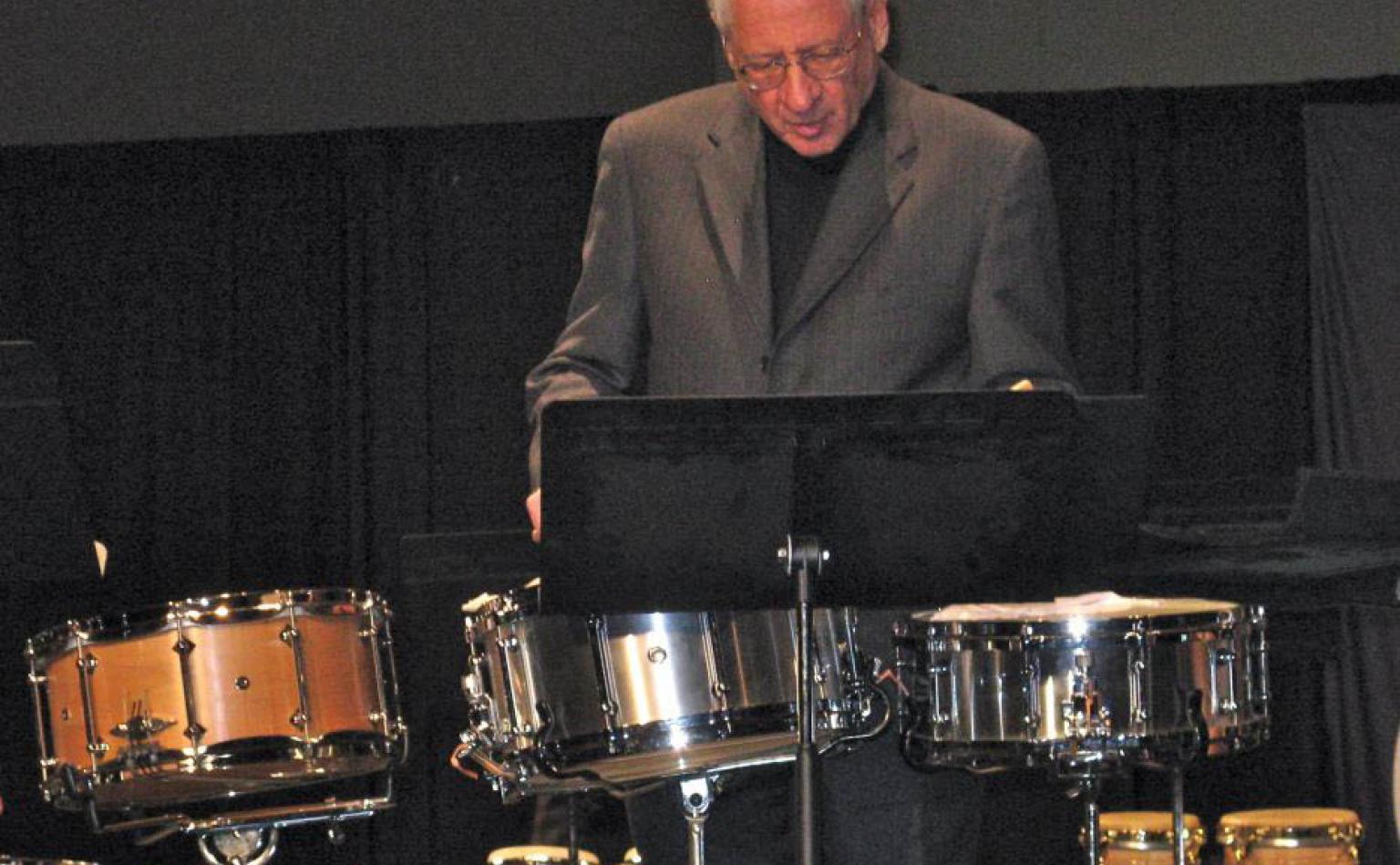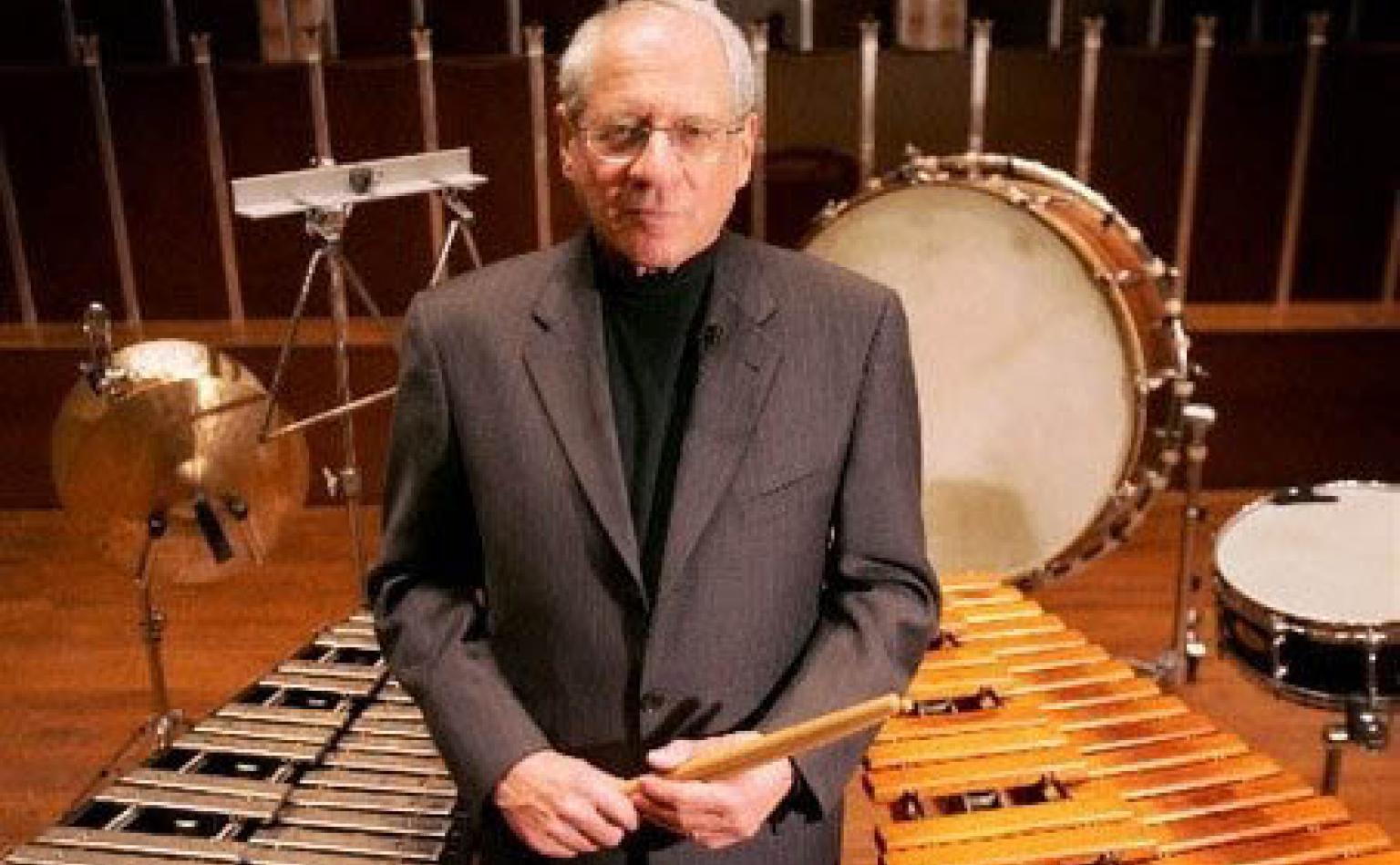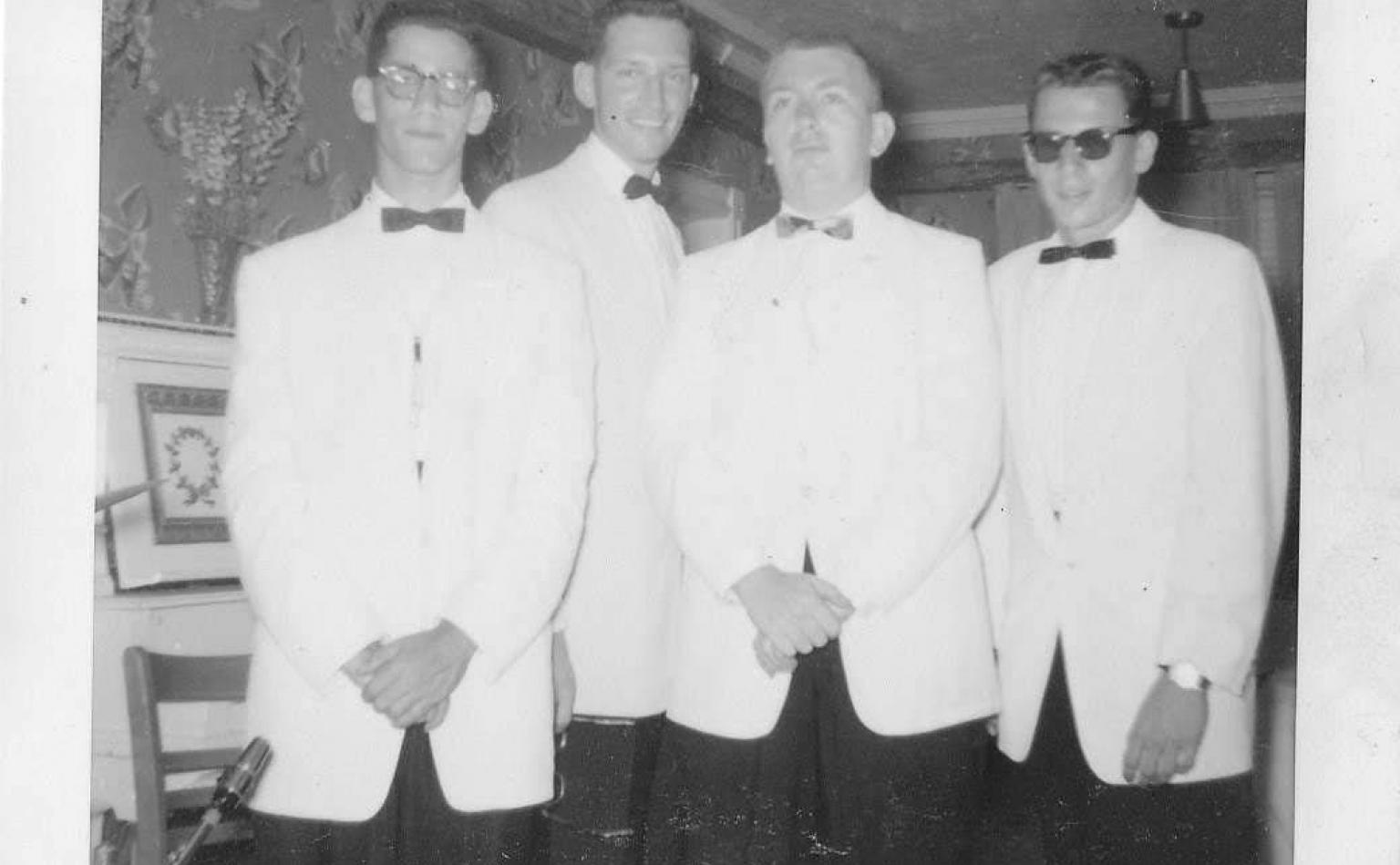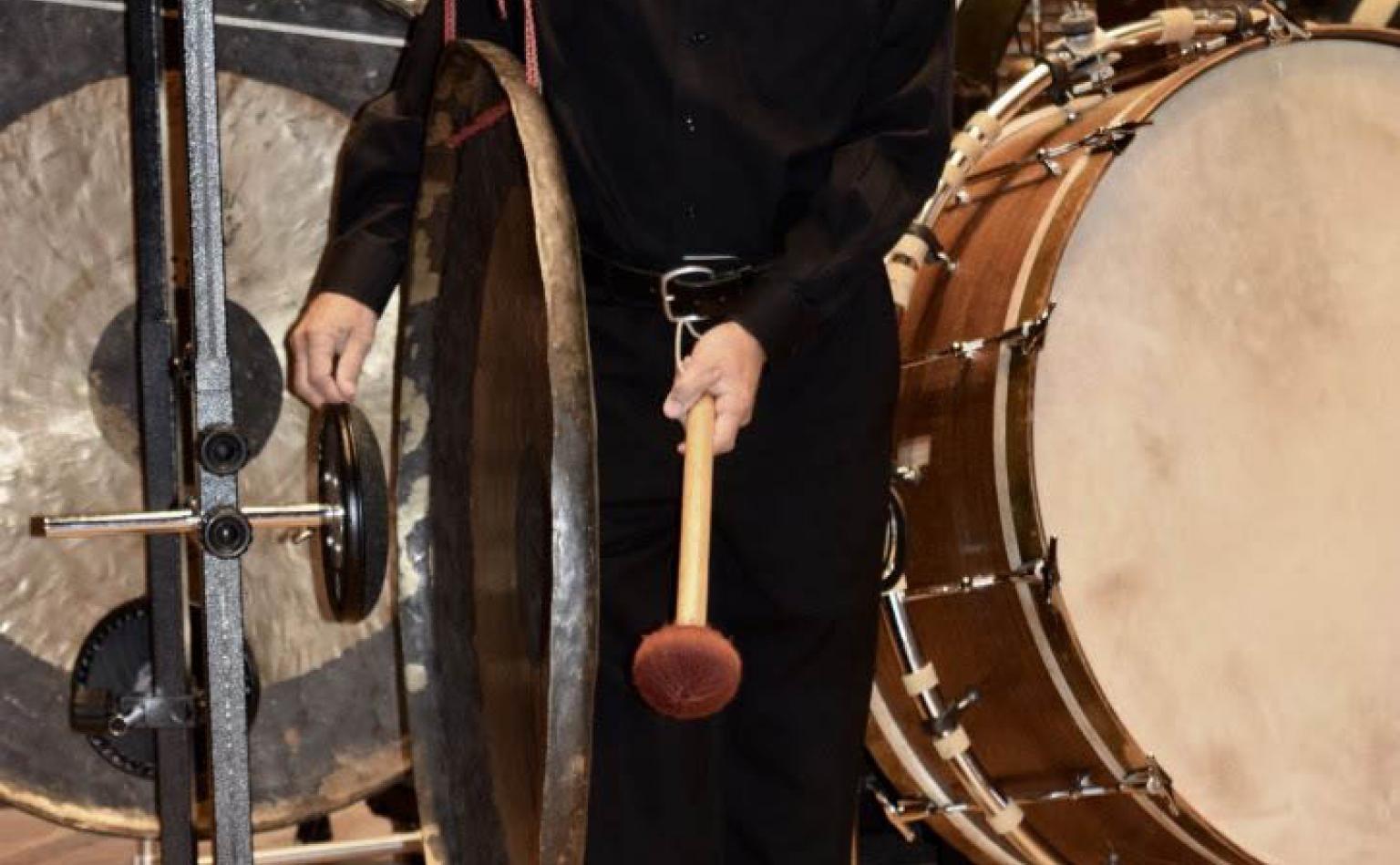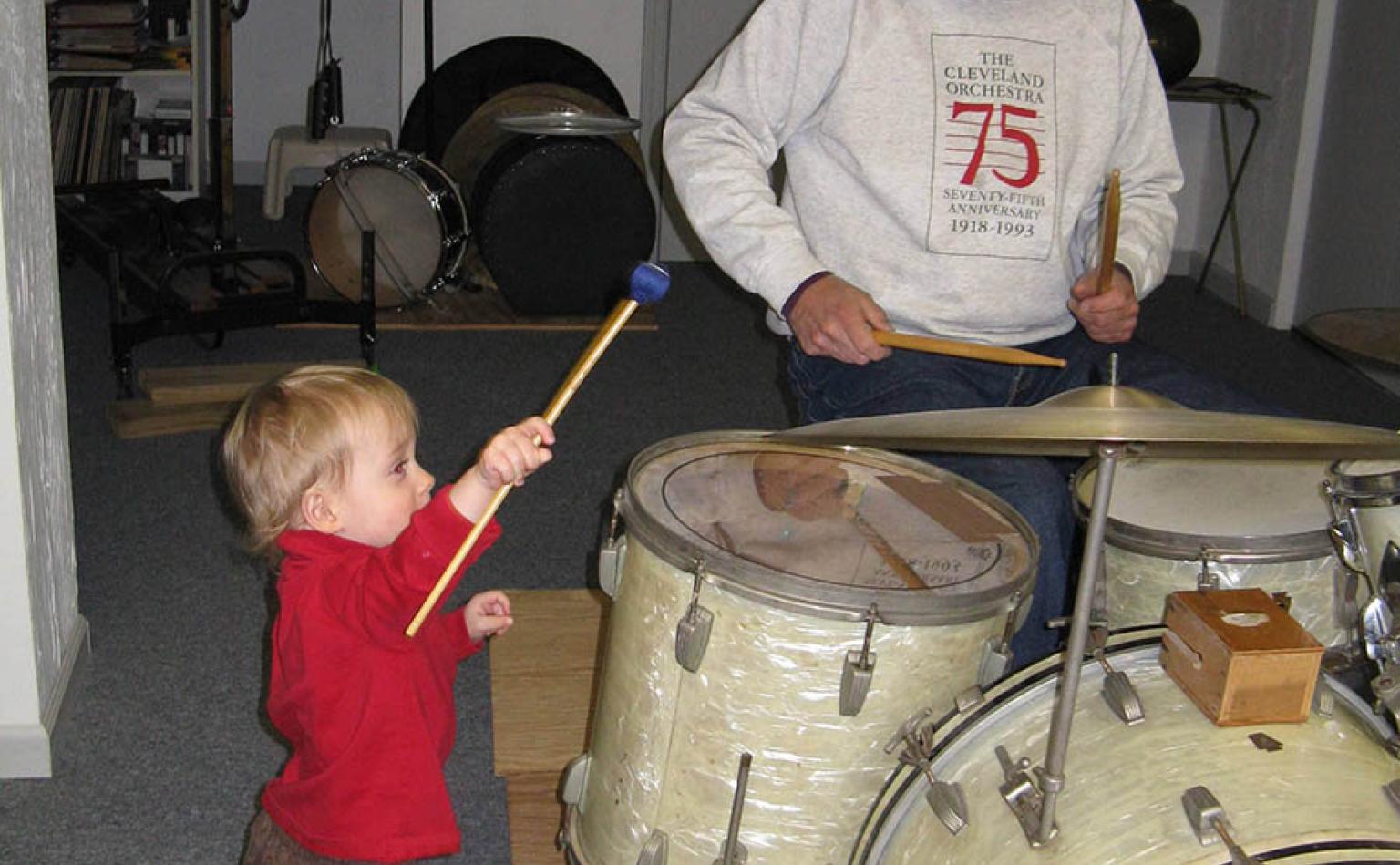Richard Weiner (In Memoriam)
Cleveland Institute of Music / PAS Hall of Fame
Overview
by Lauren Vogel Weiss | Percussive Arts Society
Richard Weiner was an integral part of the “Cleveland sound” for almost a half-century, during which time he served as principal percussionist of the Cleveland Orchestra. From the delicate jingle of the tambourine to the roar of the bass drum, he provided the perfect “color” on top of the shimmering strings or powerful brass as he performed with the world-renowned orchestra in Severance Hall in Cleveland and all over the world.
Weiner is joining two of his teachers—Charles Owen (1981) and George Gaber (1995)—and his mentor, Cleveland colleague Cloyd Duff (1977), in this prestigious honor. “Being elected to the PAS Hall of Fame by your peers is a great honor,” Weiner says. “I’m proud of the work I did in the orchestra and all of our recordings, but I’m equally proud of all the students I’ve been privileged to teach over the years.”
From classical music to jazz drumset, from coaching students into orchestras all over the world to practicing law (he has a Juris Doctor degree), Rich Weiner is a man of many talents.
FROM PHILADELPHIA TO CLEVELAND
Rich Weiner (pronounced WEE-ner) was born in Philadelphia on March 8, 1940. “My father was a self-taught drummer,” Weiner says. “He took me to see Tommy Dorsey’s band at the Earle Theater, and I was smitten by the trombone! But when it was time to start playing music, my dad didn’t want to invest in another instrument, so I began to play the drum. My very first lessons were at Carnell Elementary School when I was eight years old. We played on wood tables in the cafeteria—not even on a drum pad, just sticks on the long tables where we ate lunch. We played from a book by Dr. Louis G.
Wersen, director of music education for the Philadelphia Public Schools. I can still picture it: starting out with single quarter notes in each hand and five-stroke rolls.”
When he was 13, Rich joined the Philadelphia Youth Orchestra. “I was very young and ‘wet behind the ears’,” he says with a laugh. “Even though I played in my junior high school orchestra, it was not at the level of an All-Philadelphia ensemble, so it was a real experience for me. I remember my very first concert at the Academy of Music [the Philadelphia Orchestra’s concert hall]; I played snare drum in [Offenbach’s] ‘Orpheus in the Underworld’.”
At age 16, Weiner began taking formal lessons from Morris Spector, a well-known show drummer in the area. “Every Saturday, I traveled to his house on public transportation—first a bus, then the train, then a trolley car,” Weiner recalls. “I spent over two hours in transit for a half-hour lesson each week. We worked on rudimental snare drum out of the NARD book, and he was very keen that I only used my wrists and not my arms, which was valuable at this time in my development. Years later, after watching percussionists like Charles Owen and Mickey Bookspan play, I adopted their approach, which utilized the arms as an extension of the wrists. I believe that this relaxed, yet controlled, technique prevented me from sustaining any sort of injury during my long career.”
During high school, Weiner played in his school’s concert band, marching band, and orchestra—mostly snare drum, but also some glockenspiel and vibraphone, plus drumset in the jazz band. “I was known as a jazz drummer,” he says. “I played drumset in several bands. And four years after I played at the Academy of Music with the Philadelphia Youth Orchestra, I performed there again, this time with the All-Philadelphia Jazz Band!”
Weiner graduated from Lincoln High School in February 1958 and received one of sixteen Philadelphia Board of Education music scholarships in the amount of $400, about half of college tuition then. Two weeks later he enrolled at Temple University, staying near his home in Philadelphia. “My teacher was Charles Owen, who was the principal percussionist of the Philadelphia Orchestra. I believe I was his first percussion major,” remembers Weiner.
“I consider my time with Mr. Owen—I never called him Charlie—to be the most seminal and important time of my career, because he taught me how to play. It was hard to get a lot done in a half-hour lesson, but he could tell you what to do and how to play in such a way that if you listened carefully, you could glean everything you needed to know about playing from those short lessons. He would say, ‘I like to do it this way.’ If you were smart, you watched the way he did it, and if you weren’t, you ended up selling cars!”
During these years, Weiner attended Philadelphia Orchestra concerts as often as he could, watching Charles Owen, Michael Bookspan, Alan Abel, and Fred Hinger play. “It doesn’t get any better than watching those people,” Weiner says with respect. “One afternoon in 1962, they asked me to join them backstage because they were thinking about starting a percussion ensemble. So I got to play with Mr. Owen, Mickey [Bookspan], and Alan [Abel], and I learned so much from playing with them that day.”
Weiner also continued to play drumset in a commercial band on weekends during college. “Truth be known,” he confesses, “I made more money playing drumset the last year I was in Philadelphia than I did during my first year with the Cleveland Orchestra!”
After graduating from Temple University in February 1962 with a Bachelor of Science in Education degree (with a performance major), Weiner went to Bloomington to audition for George Gaber at Indiana University. After playing all the standard percussion instruments one would play on an audition, Gaber asked him if he played drumset. “I played fours for him,” recalls Weiner, “and he said, ‘Okay, you’re in!’ Then he asked me if I would like to go to Aspen for the summer to study with him. I didn’t even know what Aspen was, but my time there turned out to be a pivotal time in my professional career.
“I met Peter Kogan—who recently retired as timpanist from the Minnesota Orchestra and still remains my friend—in Aspen, where we both played in the student orchestra,” Weiner continues. “We also played in the Aspen Festival Orchestra, along with famous professional musicians from all over the country. One day Mr. Gaber asked if anyone wanted to perform ‘Oixeaux Exotiques’ [‘Exotic Birds’] by Olivier Messiaen, and I volunteered, so several weeks later, after hours of practice, I played the American premiere of that piece—with the composer in attendance—with the professional orchestra, and the following week, I played his ‘Awakening of the Birds’ [‘Reveil des Oiseaux’]. When I played ‘Exotic Birds,’ I had no idea that I would perform it in every succeeding decade until I retired.
“Since there was no timpani part in that piece, Mr. Gaber played temple blocks and set them right next to the xylophone. Afterwards, he told me that he did it to help me in case I got lost, but fortunately I didn’t!” Weiner says with a chuckle. “I believe that those performances cemented me as a performer in his mind.
“While I was a grad student at IU, Mr. Gaber suggested I practice as many accessories as I could. Like most people who were the best percussionist in their band or orchestra, I ended playing a lot of snare drum, keyboard, and timpani,” Weiner says. “So I worked on my cymbals, triangle, and tambourine. I was also assigned to the ballet and opera orchestras instead of the principal symphony orchestra. Mr. Gaber was smart like a fox; he instinctively knew that I could have a performing career, and he wanted me to play tambourine in ‘Carmen,’ timpani in ‘Aida,’ pieces like that, which turned out to be very valuable experiences.”
At that time, when there was an opening in an orchestra, the conductor would call someone he respected to get a recommendation of a promising young student. “In the spring of 1963, Mr. Gaber said he had some important auditions for me and I needed to practice,” remembers Weiner. “In those days, we were not provided with an audition list, so I needed to prepare everything from the orchestral repertoire that I could. Fortunately, I had copied Charles Owen’s repertoire book—by hand, since there were no copy machines then—so I had hundreds of pieces to practice, in addition to those in the Goldenberg and Gardner books.”
Weiner’s first audition was for the principal percussion job in Milwaukee, Wisconsin, which he won but did not accept because a few weeks later he had an audition in Cleveland, Ohio. “Since I’m an East Coast person, I didn’t know that Cleveland was considered a ‘Big Five’ orchestra,” he says with an embarrassed laugh. “Fortunately, the week before the audition was spring break, so I practiced between eight and twelve hours a day. I played all the major pieces at the audition, and then Mr. [George] Szell spoke to Cloyd Duff—he didn’t talk directly to me!—and said, ‘Have him play some castanets for me.’ So I played ‘Carmen,’ which I had just played with the IU Opera. Mr. Szell immediately said, ‘Too fast! I will conduct.’ I played with him and then left the stage, mentally thanking Mr. Gaber for placing me in the opera orchestra. Later that day, I was told that I won the job.”
THE CLEVELAND ORCHESTRA
“1963 was a banner year for me,” Weiner says. “I graduated from Indiana University with a master’s degree [and was the first IU percussionist to be awarded a Performer’s Certificate]; I won a job in the Cleveland Orchestra; I was asked to teach at the Cleveland Institute of Music; and I got married!” Rich and his wife Jacqueline—whom he calls his best critic, even though she is not a musician—have been married 55 years and have two married daughters and four grandchildren.
“I was in the Cleveland Orchestra,” he reflects. “At that time, Cloyd Duff was the principal timpanist and principal percussionist, and he assigned me parts to play. The very first piece I played in the orchestra was ‘Roman Carnival Overture’ on tambourine. During the first rehearsal, the introduction was thrilling and scary; the musicians were so great! Another week, I played ‘Colas Breugnon’ on xylophone.
“About five years later, I was called to the office and told that Dr. Szell wanted to offer me the principal percussionist job. Of course, I was honored and thrilled and took the position. People used to ask me, ‘When did you audition for the job?’ It didn’t just happen; I auditioned every day for five years!” Weiner was appointed principal percussionist in 1968, a job he held for the next 43 years.
Weiner played alongside legendary timpanist Cloyd Duff for 18 seasons. “I consider him a mentor of mine—not a teacher, but a mentor. Not only was Cloyd a wonderful player, he was such a nice person. He had an innate pride in his drums, along with such respect and honor for what he did. I gleaned techniques I could use on the snare drum and other percussion instruments from watching him play timpani; you could see his touch.
“Soon after I joined the orchestra,” Weiner continues, “Cloyd came up to me and said, ‘Here’s the way we like to operate: Don’t be insulted if people in the section come to you and say you’re behind, or it’s a little loud, or do this or do that. We like to correct issues before Szell corrects them.’ That was such a great idea.
“Later in my career, Christoph von Dohnányi would say, ‘Richard, this is bothering me. Can you fix this?’ I knew that he respected me and knew that we could do what he wanted. The same thing happened with [Lorin] Maazel. Maybe the instrument didn’t fit the piece, or maybe there was a problem with the ensemble that was not even our fault. But it was still something that we had to deal with.”
As principal, Weiner was proud of how he organized his section and knew his players. “I always tried to assign parts that the other percussionists could play well,” he explains. “I never wanted to put anyone in a position where he was uncomfortable. You want to give them parts they are comfortable with, but challenge them as well. I tried to respect the members of my section; they were there because they were exceptional professionals and percussionists. During my Cleveland career, I have been so privileged to play alongside Paul Yancich, Emil Sholle, Bob Matson, Joe Adato, Don Miller, Peter Kogan, Tom Freer, and Marc Damoulakis.”
It may sometimes sound like Weiner is dropping names of legendary conductors, but he has performed and recorded with some of the best. In addition to George Szell, he has played with Cleveland Orchestra music directors Lorin Maazel, Christoph von Dohnányi, and Franz Welser-Möst, resident conductors Jahja Ling, as well as Aaron Copland, Igor Stravinsky, Leonard Bernstein, Eric Leinsdorf, Eugene Ormandy, George Solti, Claudio Abbato, Daniel Barenboim, Simon Rattle, John Adams, Herbert von Karajan, Michael Tilson Thomas, Henry Mancini, Erich Kunzel, John Williams, Arthur Fiedler, Leonard Slatkin, Seiji Ozawa, Christoph Eschenbach, Kurt Masur, Vladimir Ashkenazy, Herbert Blomstedt, Robert Shaw, Bernard Haitink, Antal Doráti, André Previn, and the list goes on.
“I recorded [Stravinsky’s] ‘L’Histoire du Soldat’ with Pierre Boulez and actually got my name on the album,” he proudly states. “We also did the complete opera Porgy and Bess with Maazel, and it won a Grammy in 1976.” During Weiner’s tenure, he performed on over 175 recordings with the Cleveland Orchestra, and seven of those won Grammy awards.
“Another one of my favorites,” he adds, “was Shostakovich’s Tenth Symphony with Dohnányi. I played snare drum and used that recording during one of our section performances at PASIC.” Weiner has also recorded Stravinsky’s “Rite of Spring” four times, with Maazel, Chailly, and twice with Boulez. “When we played with Boulez in 1969, we did the ‘Dance Sacrale’ [‘Sacrificial Dance’ movement] in one take!” Weiner has recorded most of Messiaen’s orchestral pieces with Boulez and the orchestra.
Weiner also played in the Cleveland Symphonic Winds between 1980 and 1982. “The three recordings we did with Frederick Fennell were the most fun,” he says. “I played snare drum on [Sousa’s] ‘Stars and Stripes’ and several other great marches.”
During Weiner’s nearly half-century with the Cleveland Orchestra, the ensemble went on over three dozen international tours, including 26 to Europe, eight to Asia, two to South America, and one to Australia and New Zealand. “In 1973, we performed at the Sydney Opera House during its inaugural season,” he remembers. “But my most memorable one may be the first foreign tour I took with the orchestra, to the Soviet Union and Europe in 1965. It was a grueling ten weeks under the auspices of the U.S. State Department and its cultural exchange program.
“We visited six cities in the USSR,” he continues, “and the tension was somewhat apparent, but we were treated like royalty and played concerts to sold-out and appreciative audiences. During one performance in Tbilisi, the lights went out during ‘Daphnis & Chloe,’ but the orchestra kept playing in the dark, to the delight and applause of the audience! We always had Soviet handlers with us, but at times I got out on my own to see the cities and sights. I also participated in some clandestine jazz dates between the American and Soviet musicians. I was only 25 years old and reveled in the intrigue.
“Then we crisscrossed Europe, playing in some of the world’s best concert halls,” adds Weiner. “This was my first concert in the famed Concertgebouw in Amsterdam. On other tours, we played in Vienna’s Musikverein. These are two of my favorite halls—a pleasure to perform in and a wonderful sound from the audience’s perspective—along with Boston Symphony Hall, Carnegie Hall, and our own Severance Hall.”
Over the years, Weiner was featured with the orchestra, including chamber music, outreach concerts, and children’s performances. In 1972, he was the soloist on Donald Erb’s “Concerto for Percussionist and Orchestra.” He was also the 16th recipient of the Cleveland Orchestra’s Distinguished Service Award.
Weiner thought about retiring for three years before he actually did. “When I found out the repertoire for the next season, I kept wanting to stay,” he confesses. “A good friend once told me that it was better to retire one day early than one day late. When I finally told my colleagues in the orchestra, they said I was still playing great and doing a good job running the section. And I replied, ‘That’s why I’m retiring!’”
Although Rich Weiner officially retired in 2011 after 48 seasons with the Cleveland Orchestra, he still performs there as an extra percussionist. In recent years, he also played with orchestras in Buffalo, Nashville, Pittsburgh, and San Antonio, the National Symphony (Washington, D.C.), and the Grand Teton Music Festival.
THE CLEVELAND INSTITUTE
Just as he learned from some of the legends of percussion, Weiner has shared his knowledge and expertise of his instrument with several new generations of percussionists, who came to Cleveland from all around the world. Since joining the faculty of the Cleveland Institute of Music in 1963, he currently serves as the Co-Head (with Cleveland Orchestra principal timpanist Paul Yancich) of the Timpani and Percussion Department as well as the Division Head of the Department.
“One of the things I’m most proud of is the number of students who have studied with me and now have fine careers in music,” Weiner says. “Not just in symphony orchestras, but as educators and in other fields in the music industry.”
His former students have filled principal and/or section positions with numerous orchestras, including Atlanta (Mark Yancich), Buffalo (Matt Bassett and Mark Hodges), Cincinnati (David Fishlock), Cleveland (Tom Freer, Donald Miller, and Paul Yancich), Los Angeles (Jim Babor), Milwaukee (Robert Klieger), Pittsburgh (Tim Adams), San Francisco (Tom Hemphill), Seattle (Michael Werner), Vancouver (Michael Jarrett), and Washington, D.C. (Eric Shin), as well as Göteberg, Sweden (Fredrik Björlin), the New Zealand Symphony (Leonard Sakofsky), and many more.
He also has students who taught at Cincinnati College-Conservatory of Music (Allen Otte), University of Denver (John Kinzie), Cleveland State (Tom Freer and Bruce Golden), University of Central Florida (Kirk Gay), and the list goes on. [Apologies to all the former students not mentioned!]
Yet other students have gone on to play in percussion ensembles, like Nexus (Garry Kvistad), The Percussion Group Cincinnati (Otte), and So Percussion (Tim Feeney); rock bands like Stabbing Westward (Andy Kubiszewski); and on Broadway (Damien Bassman and Mike Englander).
“I consider his teaching as seminal to my career as both a musician and businessman,” states Garry Kvistad, who is also CEO of Woodstock Chimes. “While I did gain technique during my studies with him, more importantly, I was able to develop a concept of musical clarity that he championed.”
“I teach my students how to be the best possible performer that they can be,” explains Weiner. “I want each one to reach his or her ultimate goal as well as their ultimate level of musicianship and technique. I even tell my students they should take lessons from other teachers and gather as much information as they can. I’m confident that I’m giving them good information, but someone may approach it from a another angle and help them. You have to have a wide range of ideas.”
“Rich always approached percussion instruments as just another musical instrument, rather than a drum,” states John Kinzie, principal percussionist with the Colorado Symphony Orchestra and a student at the Cleveland Institute from 1981–83. “One didn’t play snare drum excerpts, you had to play the piece of music. Mallet excerpts or solos were expected to be as musical as any violinist playing a grand piece of music. He was persistent of this perspective and was unaccepting of anything less.”
“My appreciation for Rich’s attention to detail and commitment to raising the standards for orchestral playing has only grown over the years,” adds David Fishlock, principal percussionist in the Cincinnati Symphony Orchestra. “It was always about the sound. Not what was easiest; not what was the quickest to learn; not what was the most popular. What sounded the best.”
What advice would Weiner give to young students today? “Follow your dream.
You don’t want to look back at age 40 and say, ‘I really wanted to be a jazz drummer, a percussionist, a marimba soloist, a timpanist, or whatever.’ Don’t give up that dream to do something more secure. But, one of my former students is now a lawyer. He wanted to be a player in a contemporary group, but after a few years of struggling, he decided he wanted to become a lawyer, and he did! He’s also playing in an amateur group in Rochester.”
Speaking of lawyers, Weiner graduated magna cum laude with a Juris Doctor degree from the Cleveland-Marshall College of Law at Cleveland State University in 1976. “At every juncture of my life,” he explains, “if it didn’t work out, I was going to be a lawyer. If I didn’t get the scholarship to Temple, if I didn’t go to Aspen, if I didn’t get the job with the Cleveland Orchestra…. But every time I thought it wasn’t going to happen, my career blossomed. Shortly after Szell died in 1970, I decided to go to night school. Although I worked part-time at some law firms in Cleveland, I wasn’t ready to leave the orchestra.
“And over 30-some years, I helped negotiate twelve trade agreements for the orchestra,” he says with pride. “I felt that what I had learned in law school was helpful. The managers in the orchestra used to say, ‘We don’t always agree, but you never make it personal.’ They always respected us because of that.”
Weiner published a book of Etudes for Snare Drum in 2012 and also wrote “Perpetual Motion for Four Diverse Snare Drums,” which was premiered by the Cleveland Orchestra in 2009. He was a longtime editor of the symphonic percussion column in Percussive Notes, and continues as a contributing writer, with articles on Debussy’s “La Mer” and Prokofiev’s “Piano Concerto No. 1” to his credit. He also serves as the co-chair of the PAS Symphonic Committee.
“Before I ever met him,” states Jacob Nissly, principal percussionist with the San Francisco Symphony (and Weiner’s immediate successor as principal percussionist in the Cleveland Orchestra), “I was utilizing his articles in Percussive Notes for years as a source of knowledge not readily available to a young musician in Iowa.”
After such a long career in a world-class orchestra, what does Weiner think is his greatest contribution to music? “I always tried to make musical sounds,” he replies. “Someone once said to me, ‘You don’t play percussion like a percussionist. You play like a musician!’ That was quite a compliment.”
Rich Weiner continues to pass down the musical traditions that he learned from Charles Owen, George Gaber, and his decades in the Cleveland Orchestra. From symphonic clinics and orchestral labs at the annual percussion convention, to his frequent performances with the Symphonic Emeritus Percussion Section at PASIC, he still links music and education into one beautiful sound after another.
“I’d like to be remembered for the manner, integrity, and passion with which I approached my instrument,” he summarizes. “I regard percussion as a musical instrument that is an integral element of any piece and not just as a stand-alone instrument. But perhaps my most treasured legacy is what I hope was the inspiration I gave to my students through my teaching methods and interactions with them. They have succeeded in their various fields of musical and life endeavors. I always tried to be a positive example to the people that I worked with, taught, and collaborated with over these many decades.”
Just as Weiner spoke of his teachers and mentors, his students do the same of him. “Rich has a subtle way of instilling the passion and commitment to his craft to all who are exposed to him,” states Feza Zweifel, principal timpanist and percussionist of the National Arts Center Orchestra in Ottawa, Canada. “This is not accomplished through words, but through action. For years, I watched how he prepared himself, his section, and a gamut of instruments for rehearsals, concerts, tours, and recordings. This was always done with extreme focus and understanding. He led through example.”
“As a rural 18-year-old moving to Cleveland in the fall of 1995, I had a vague idea, from playing in youth orchestra, that music might be fun to study,” recalls Tim Feeney, former Professor of Percussion at the University of Alabama, currently teaching at the California Institute of the Arts. “I had virtually no idea what it actually meant to pursue it as a life—the discipline and rigor needed to build the necessary skills; the imagination needed to conceptualize a sound and the keen attention to detail required to sculpt it to match that vision; the confidence to let it fly in public; the self-awareness not to take it too seriously. I owe Rich, among other things, my hands, my ear, my brain, a good part of my sense of humor, any sense of purpose I might have, and a great deal more.”
“He is truly ‘old school’ in his manner and professionalism,” summarizes Tom Freer, assistant principal timpani and section percussionist with the Cleveland Orchestra. “He is the epitome of musical integrity.”

